In the heart of Madhya Pradesh’s Dhar district lies a captivating relic from the tenth century, a monument that transitions between its roles as a temple on Tuesdays and a mosque on Fridays. This architectural marvel, dating back to the tenth century, bears the dual identity of Bhojshala/Maa Vaghdevi Temple and Kamal Maula Mosque, a testament to the region’s cultural tapestry.
March 11, 2024, marked a significant turn of events when the Indore bench of the MP High Court issued an order summoning the Archaeological Survey of India to conduct a comprehensive survey of the site. Endowed with two venerable monikers, Bhojshala and Maa Vaghdevi Temple, the location owes its nomenclature to Raja Bhoj, the visionary ruler of the Parmar dynasty, whose reign from 1000 to 1055 AD left an indelible mark on the region.
Raja Bhoj’s unwavering dedication to enlightenment and scholarship manifested in the establishment of a prestigious college in Dhar, which later evolved into the renowned Bhojshala. Drawing scholars from far and wide, this bastion of learning nurtured disciplines ranging from music and Sanskrit to astronomy and philosophy, earning its reputation as the world’s foremost Sanskrit academy.
However, amidst the pursuit of knowledge, the sanctuary of Bhojshala endured turbulent times. Throughout the annals of history, waves of turmoil swept over the hallowed grounds, orchestrated by successive Muslim monarchs between 1305 and 1514 AD. The destructive fervour culminated in the ruthless onslaught of Alauddin Khilji in 1305 AD, marking the first of many assaults on the majestic temple.
In the early 2000s, the sanctuary became embroiled in a political maelstrom, as administrative decisions threatened its sanctity. With the backing of the Congress government, the Muslim community was granted permission to offer prayers within the premises, while Hindu devotees faced prohibitions and police cases. The ensuing conflict bore witness to acts of violence and resistance, culminating in a legal battle that saw the faithful reclaim of their right to worship.
Yet, the struggle persists, as the matter remains entangled in the labyrinth of legal proceedings. With the recent court order for an ASI survey, hope flickers anew—a beacon of justice illuminating the path towards resolution for a place where faith and heritage converge.
(A video report on this case can be seen here)
The Ground Visit
With rising debates around Bhojshala and claims on the structure, I visited the site on March 7, 2024, on behalf of Organiser Weekly and gathered first-hand information for readers. The following report encapsulates details from my visit, where I met representatives from both the Hindu and Muslim sides. With the court’s permission for an ASI survey on the campus, it appears to lean favourably towards the Hindu side.
Situated in the Dhar district of Madhya Pradesh, Bhojshala enjoys convenient transportation links via railway and road. Travelling from Indore to Dhar by bus, a journey of approximately two hours covering 64 kilometres, this correspondent then took a local autorickshaw from the bus stand, a ten-minute ride to reach the centrally located Bhojshala campus, surrounded by schools and temples.
Upon arrival in the city, adorned with saffron flags and decorations for the Ram Mandir Pran Pratishtha day, the correspondent noticed barricades marking the campus entrance, with a police chowki nearby. A notice board outside the chowki delineated specific days for Hindu (Tuesday from Suryoday to Suryast) and Muslim (Fridays between 1 pm to 3 pm) visits, with the rest of the week open to all visitors for a nominal ticket of Rs 1.
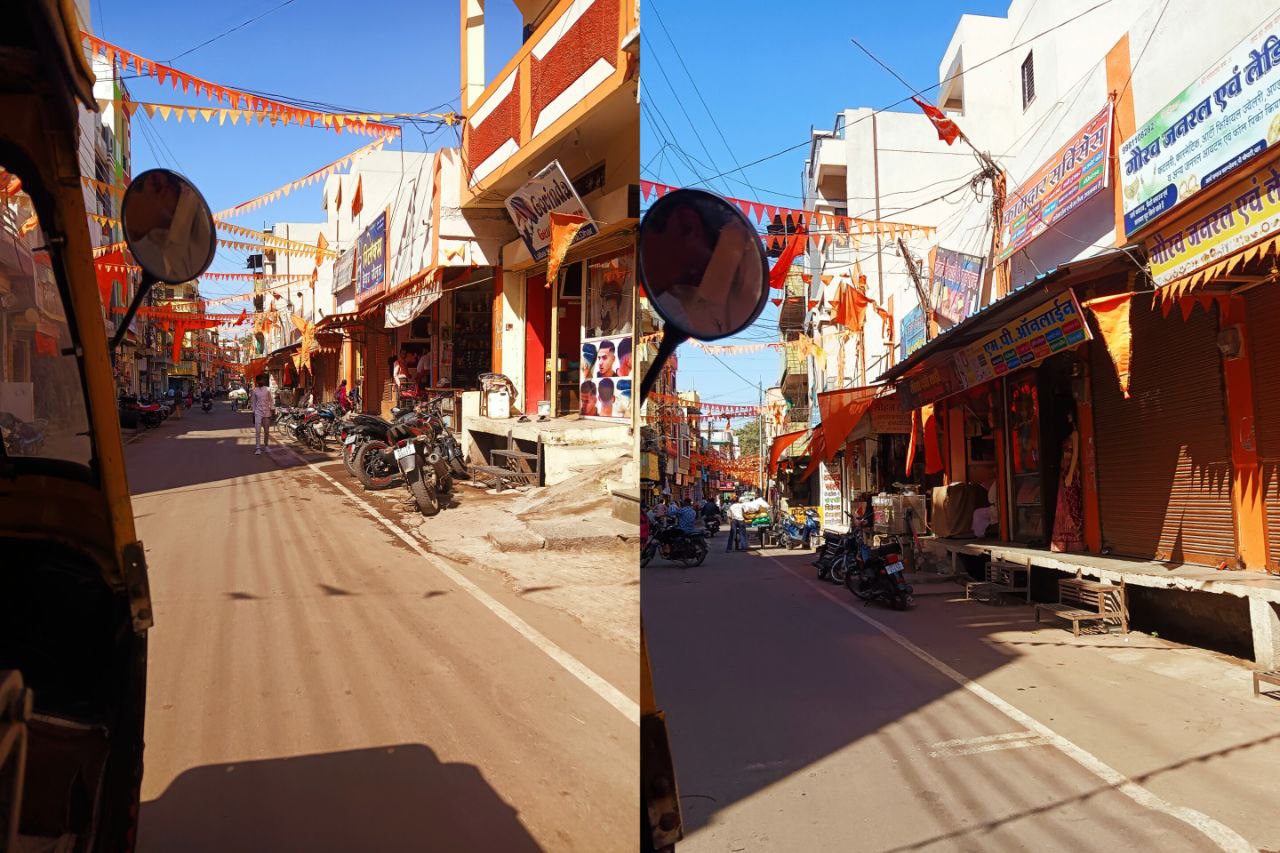
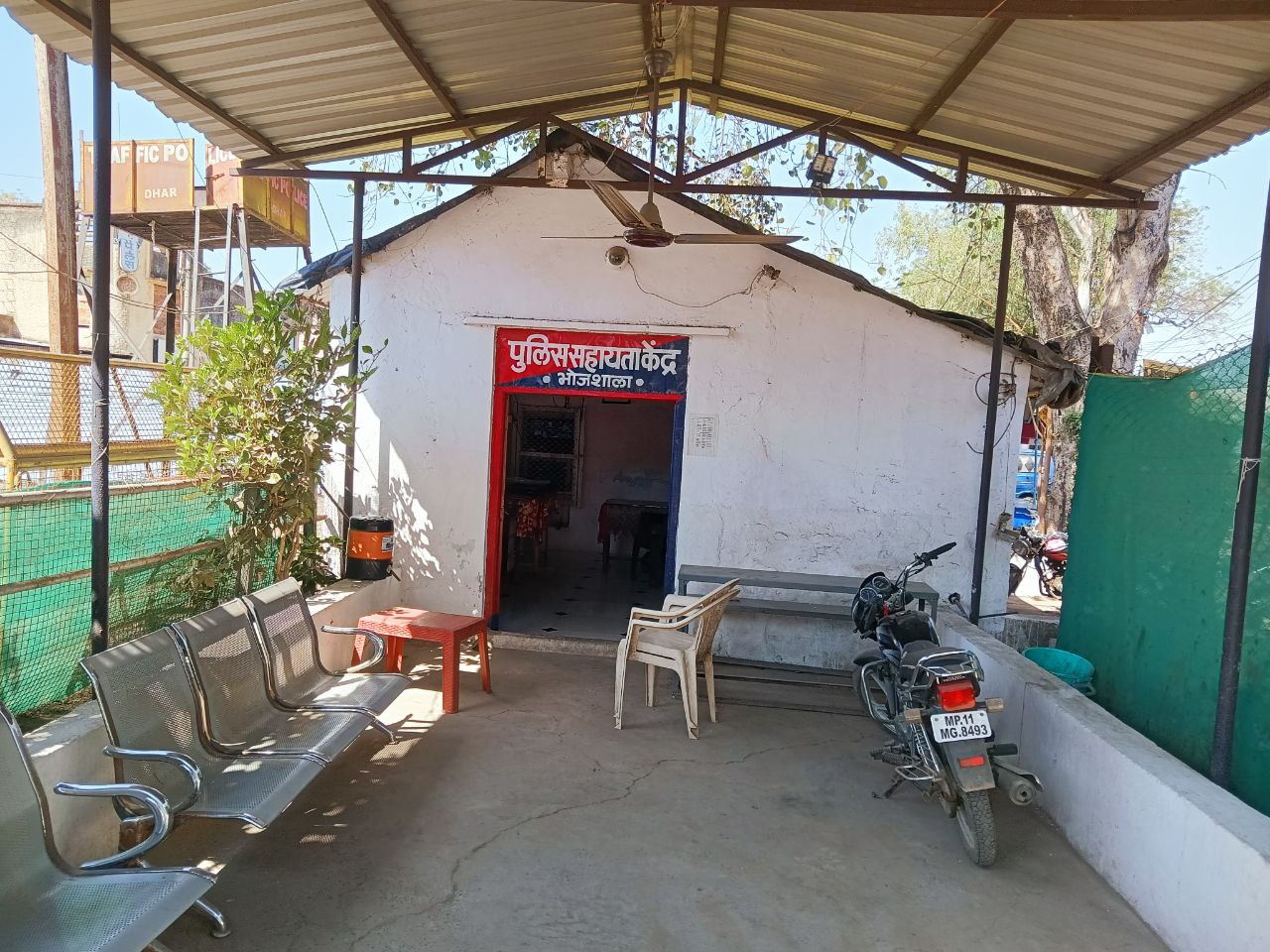
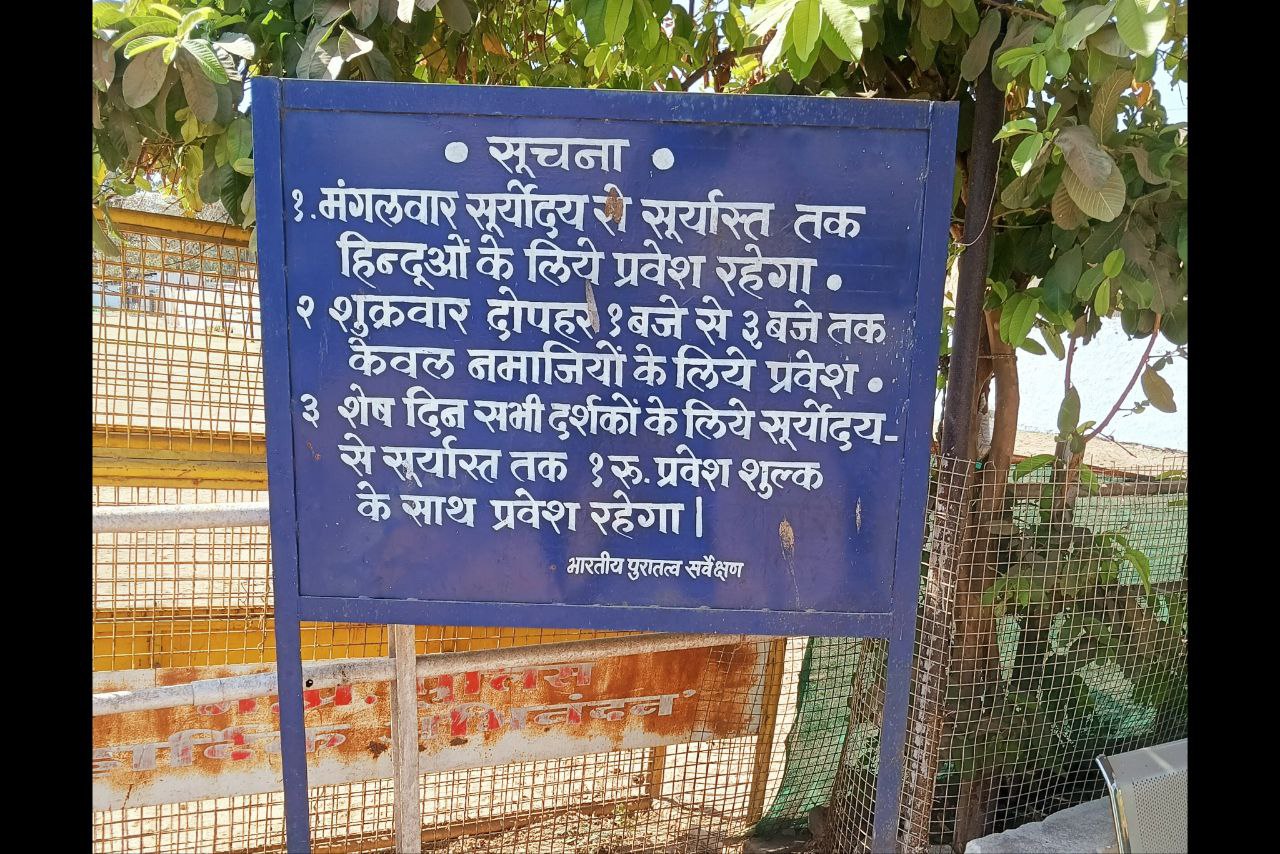
Passing through the barricades and proceeding about 500 meters, the correspondent observed the green and white domes of the mosque. Accompanied by Sumit Choudhary, a local Hindu activist and member of the Bhoj Utsav Samiti, we traversed a makeshift lane, once a butcher house before May 12, 1997, now utilised by Muslims for annual Urs gatherings since then.
Further along the lane, we passed a “Chadar” shop owned by a Muslim, adjacent to the Mazar of Hisamuddin Chishti, with police officers stationed nearby. The passage to the Bhojshala campus, seemingly resembling a mosque, led to its grand entrance, guarded and equipped with electronic gates. Adjacent to the campus wall stood the Mazar of Kamaluddin Chishti.
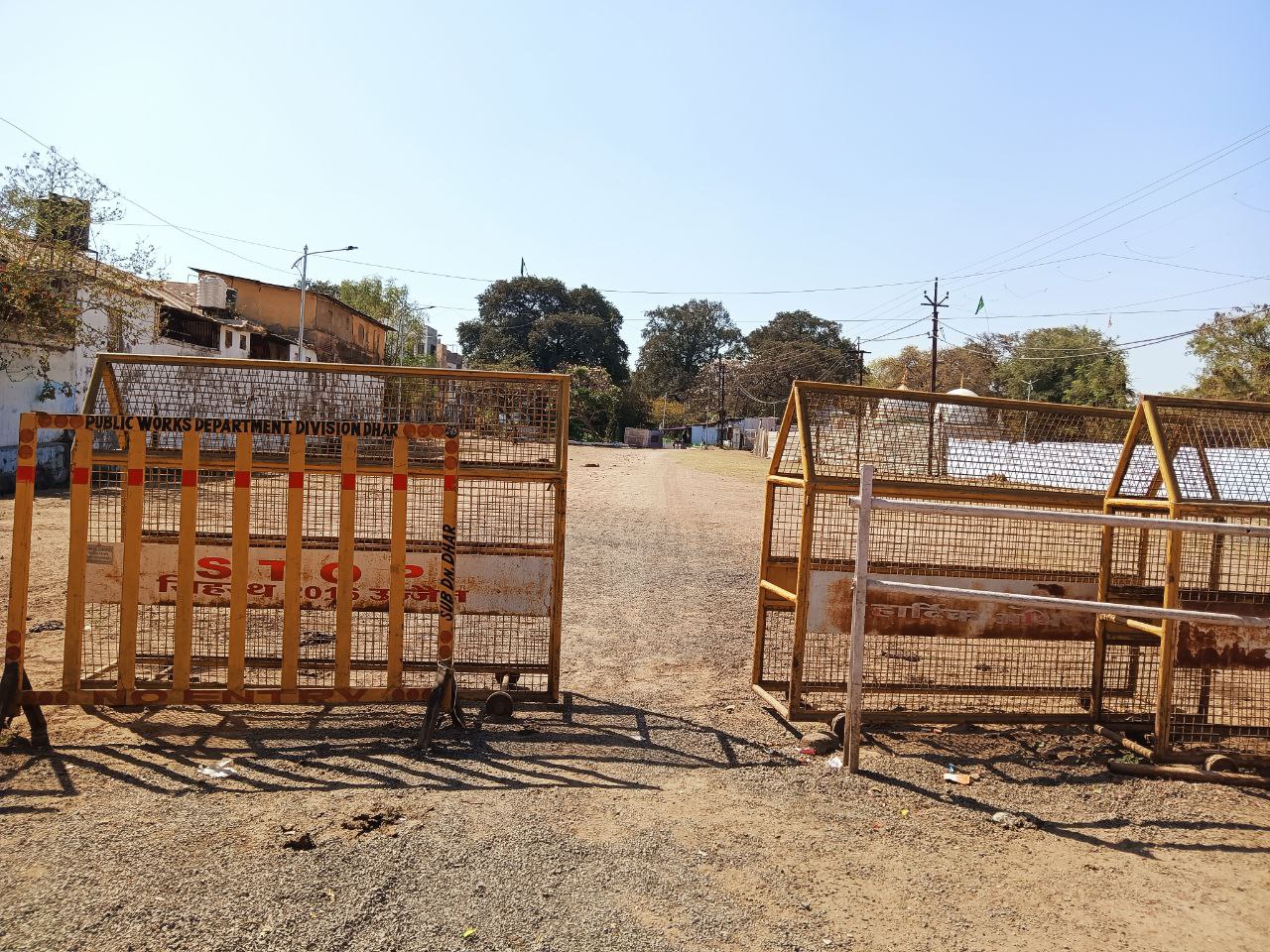
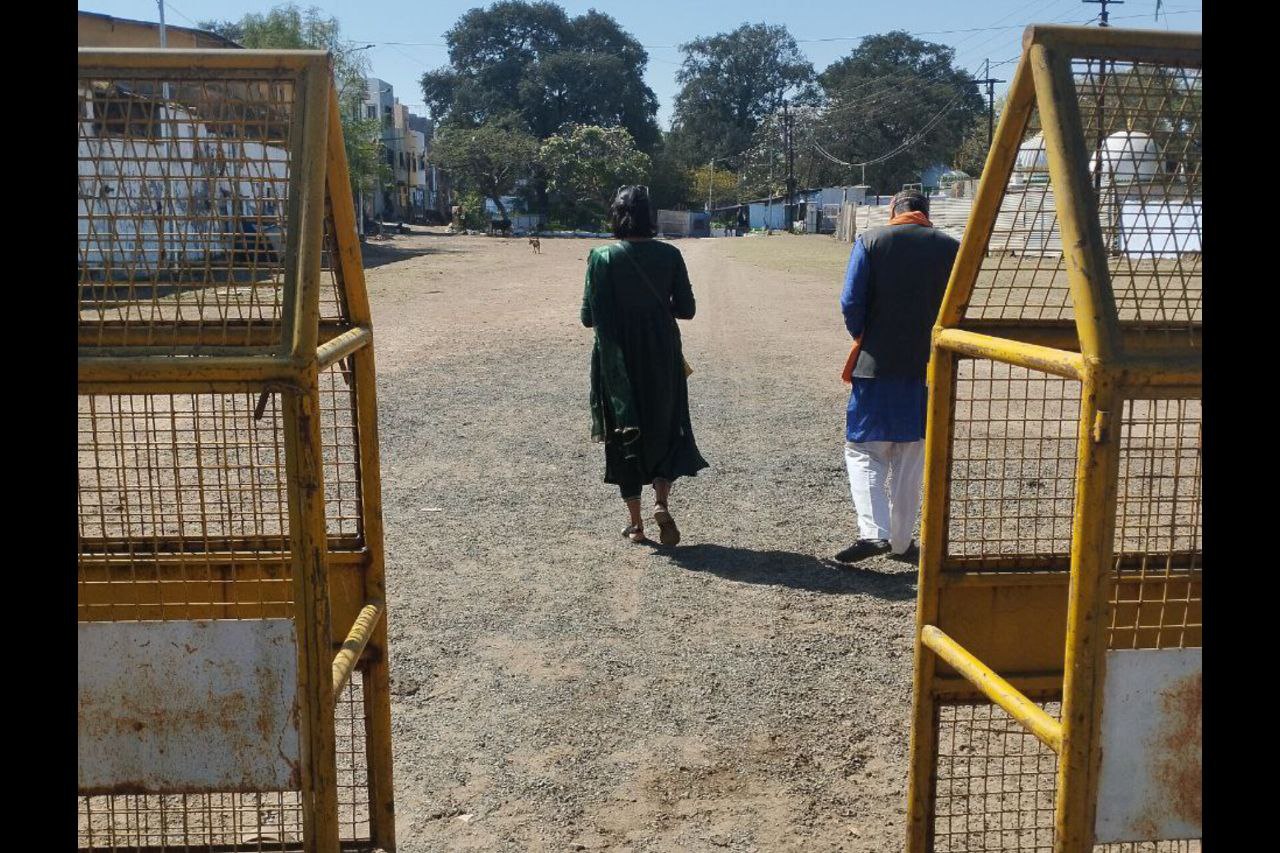
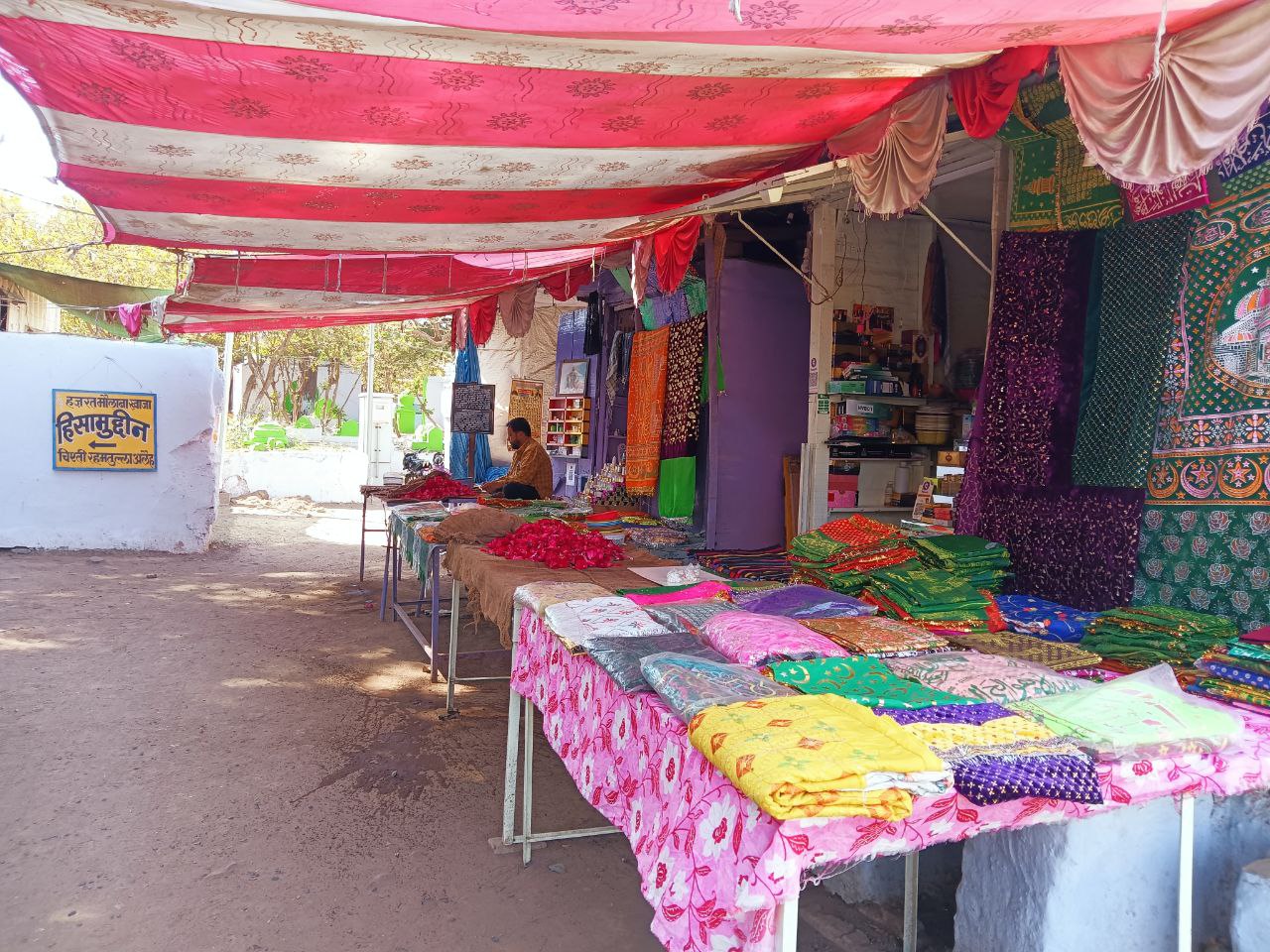
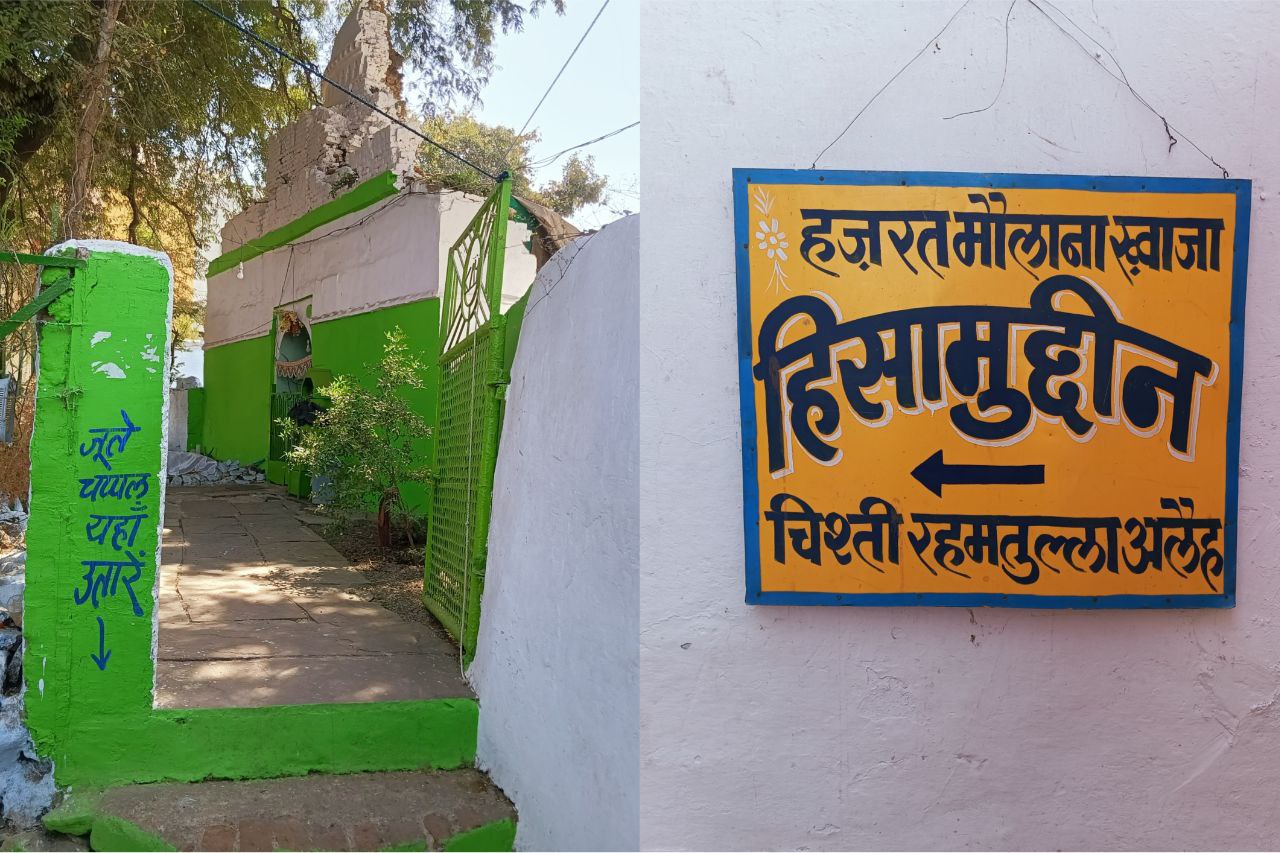
Upon entering the campus and removing our shoes, we purchased visiting tickets, noticing visitors with skull caps entering the Mazar area with offerings. The ticket identified the site as Bhojshala/Kamaluddin Maula’s Mosque.
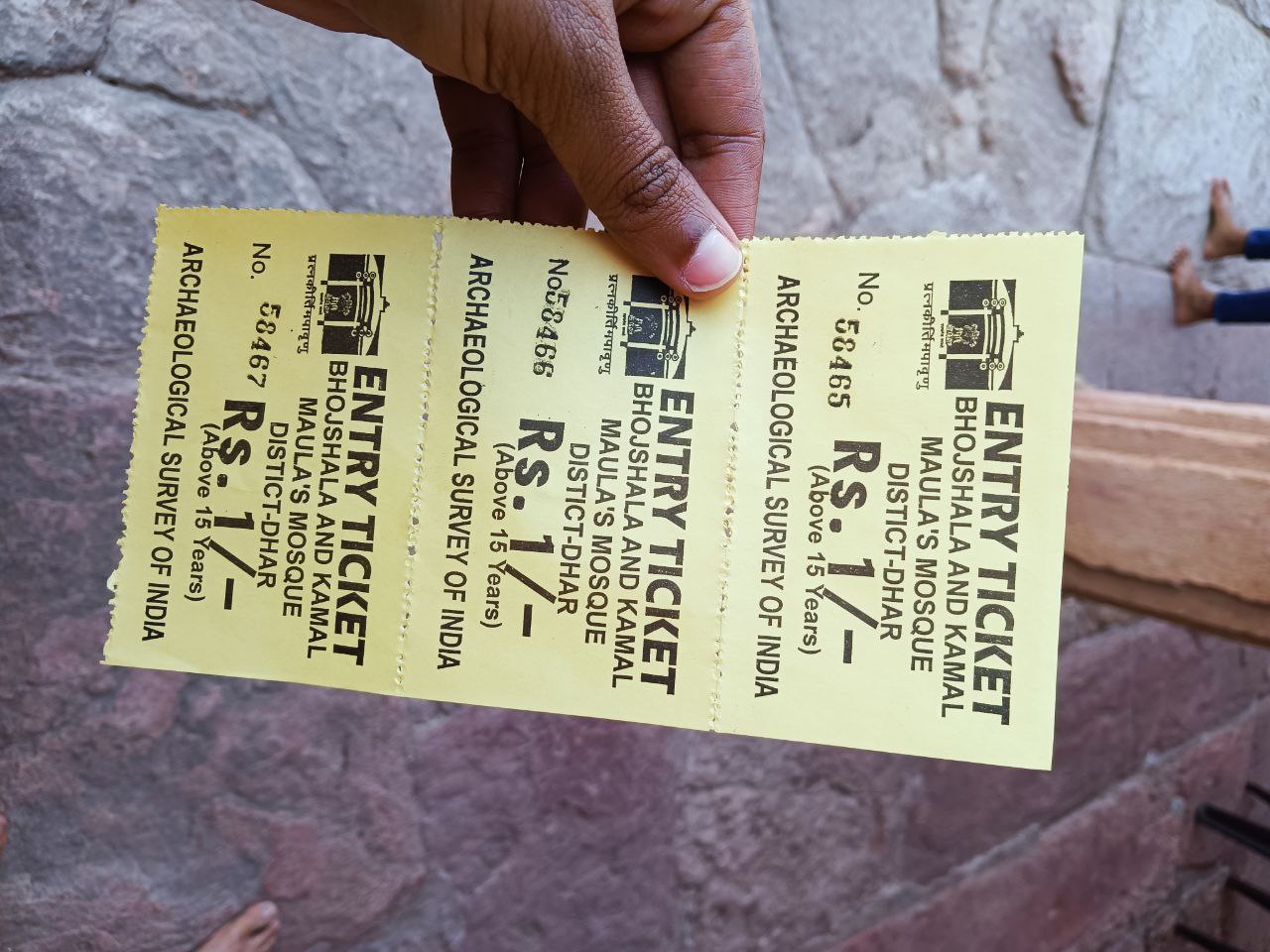
Inside the campus, Sumit highlighted inscriptions secured by the ASI during their 1952 survey, written in Pali and Prakrit languages and containing references to Bhagwan Ram and other mantras, including the Saraswati mantra. Some of these inscriptions, Sumit explained, were chopped and embedded in the floor of the Garbhagrih by Islamic invaders to refute Hindu religious beliefs by walking over them.
As per the official records, these slabs bear two odes dedicated to the Kurmavtara, the crocodile incarnation of Vishnu, inscribed in Prakrit. Additionally, two sarpabandha pillar inscriptions are present at the site, one featuring the Sanskrit alphabet and the chief inflectional terminations of nouns and verbs, and the other containing personal terminations of the ten tenses and moods of Sanskrit grammar. These inscriptions, dating back to the 11th-12th Century A.D., are engraved in the characters of that period. Above them, two Sanskrit stanzas in Anustubh meter are engraved. The first stanza lauds Udayaditya and Narvarman, the Paramara kings who succeeded King Bhoja directly. The second stanza attributes the pillar inscription to Udayaditya, leaving no doubt that King Bhoja’s college or temple of Saraswati stood here and was developed by his successors.
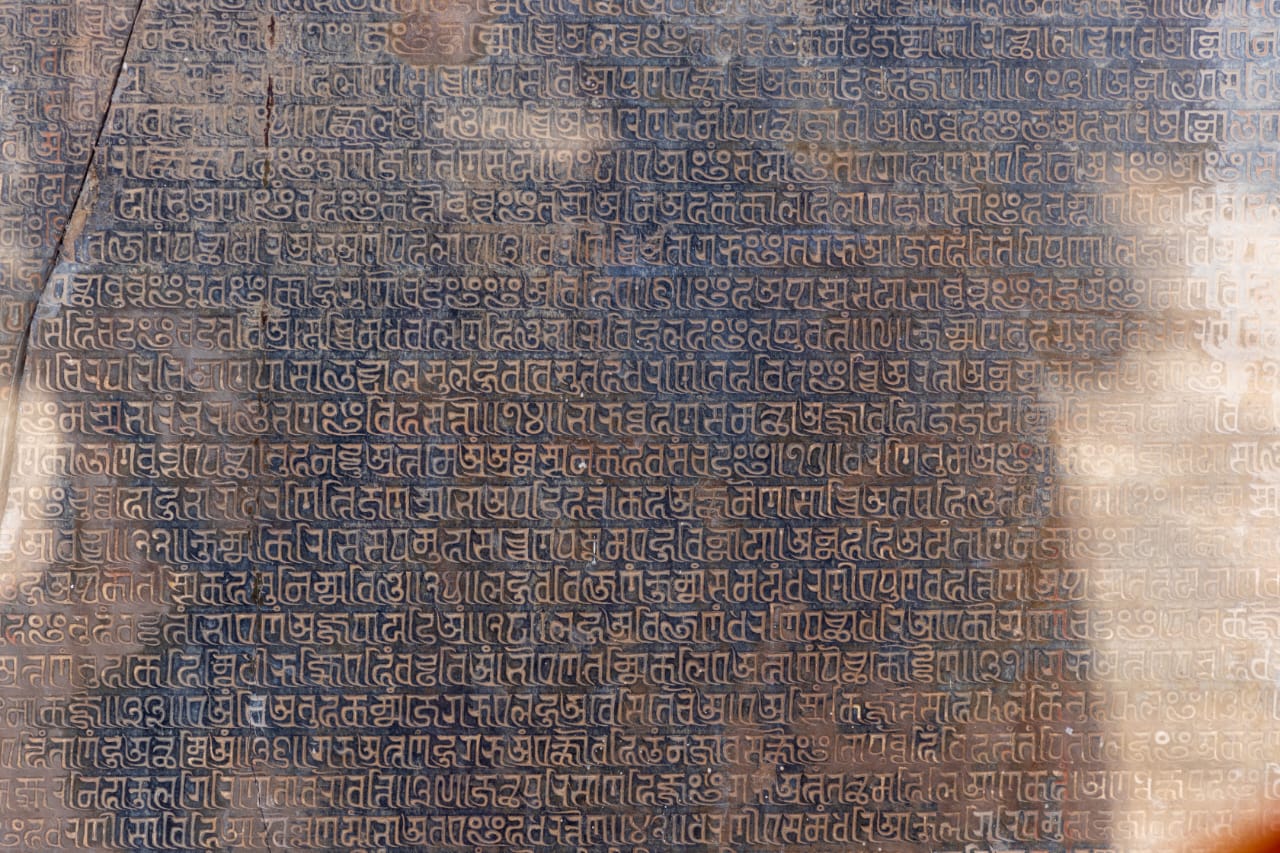
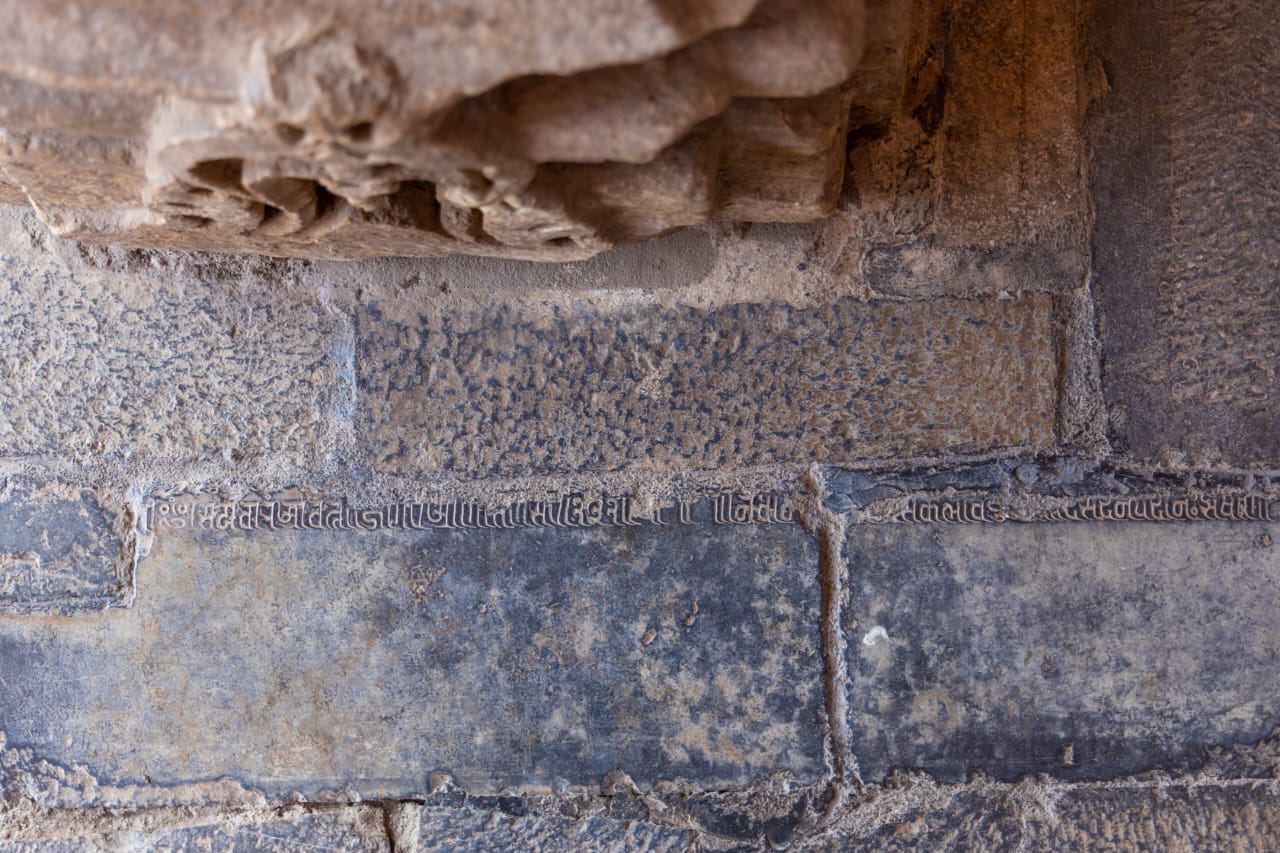
Unveiling Bhojshala: A Historic Overview
It’s essential for readers to understand the historical context of Bhojshala. The first attack on Bhojshala occurred in 1305 AD by the merciless Alauddin Khilji, marking the beginning of an Islamic invasion 36 years earlier when Kamal Moulana, a Muslim Fakir, arrived in Malwa, employing deceptive tactics to convert Hindus to Islam. Over the years, he gathered intelligence on Malwa, eventually aiding Khilji’s massacre of 1200 Hindu scholars and destruction of the temple complex.
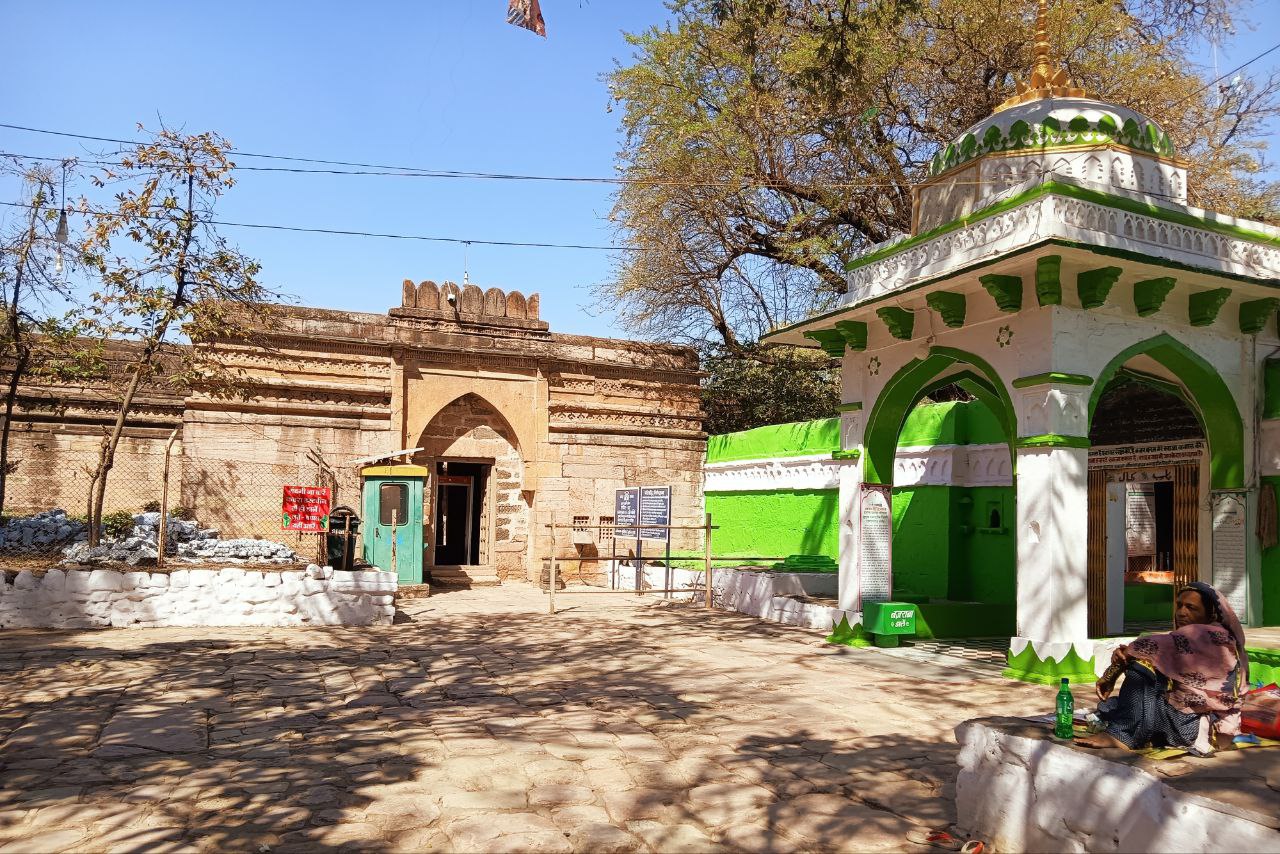
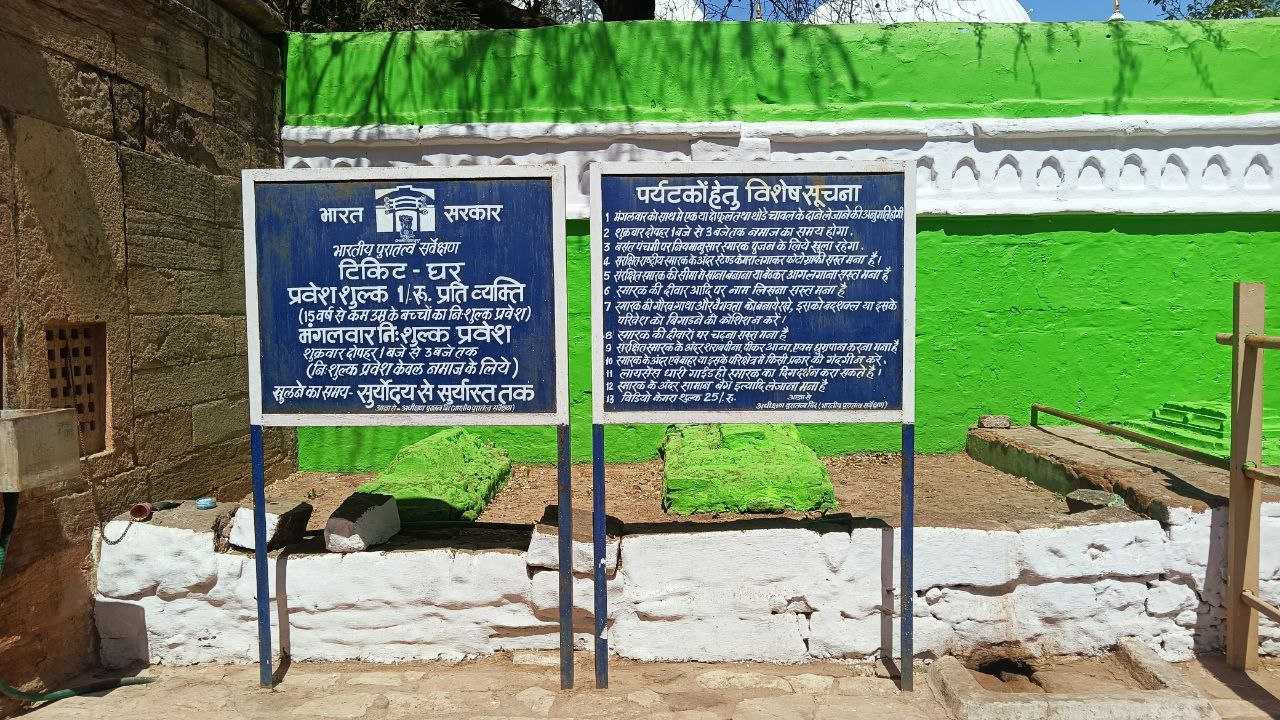
Originally, Bhojshala spanned from Munj Talab to Gyanpura and served as a residence for Acharyas, boasting a grand Mandap adorned with carvings and inscriptions, now reduced to its core, the Garbha Grih, measuring 200 feet by 117 feet. Sculptor Manthal’s creation, the Sangmarmar statue of Maa Vaghdevi, once resided here, inspiring the design of the Gyanpeeth award trophy since the 1960s.
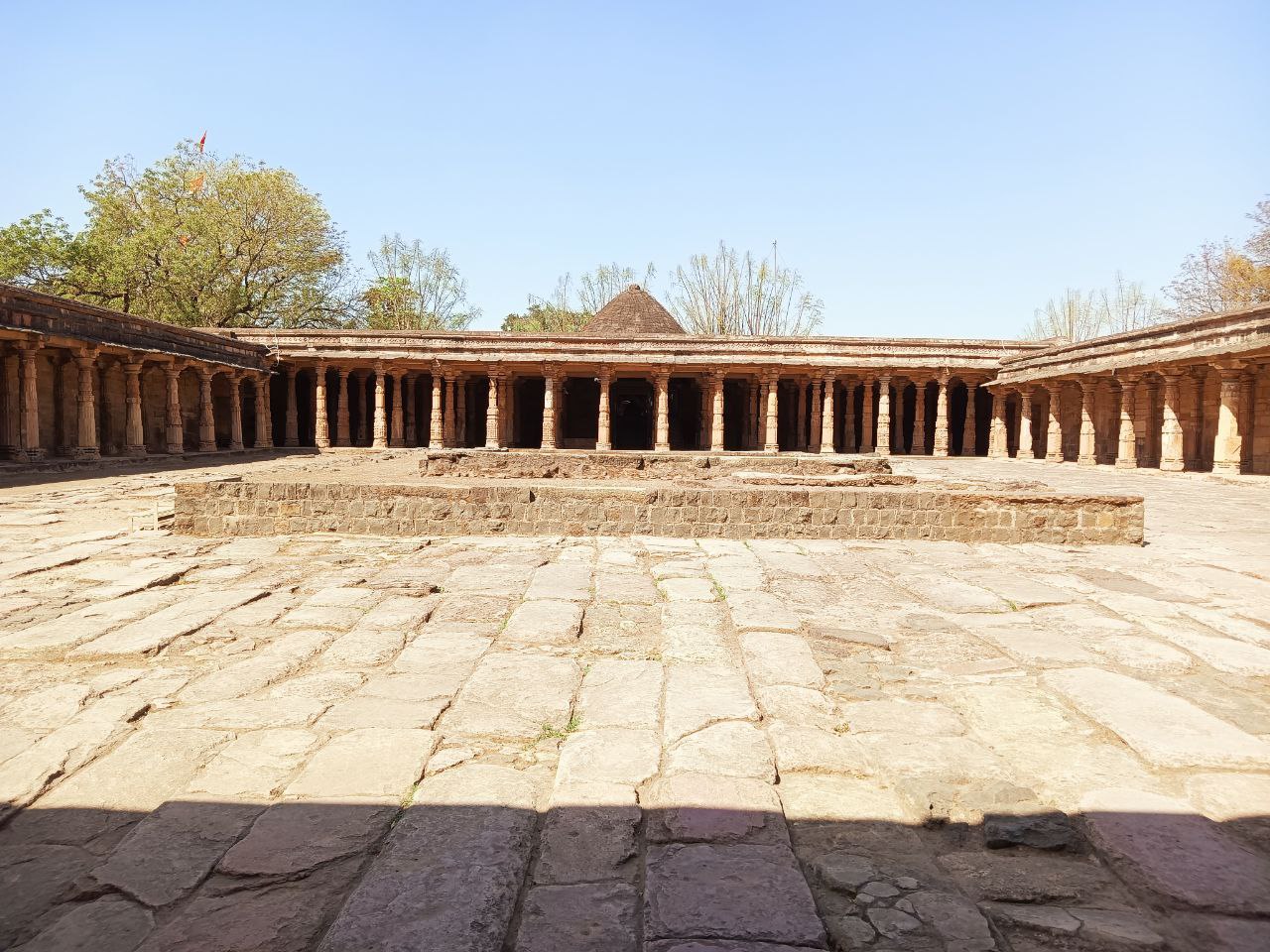
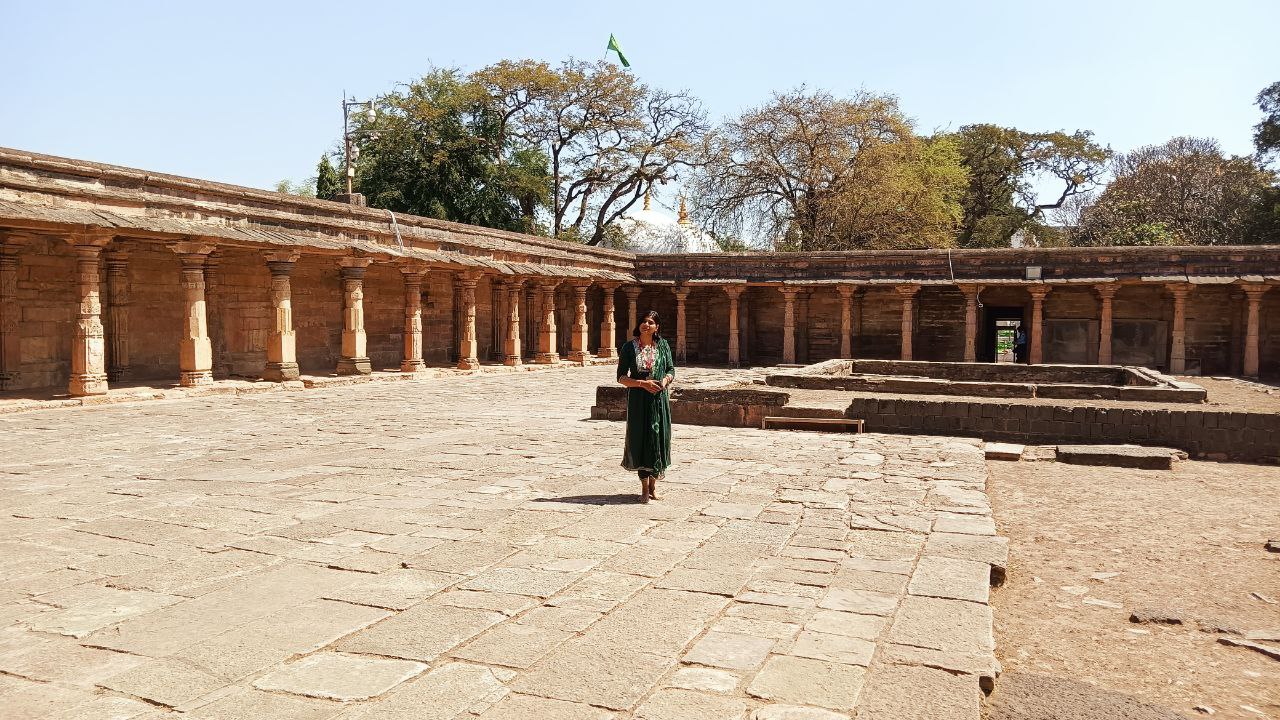
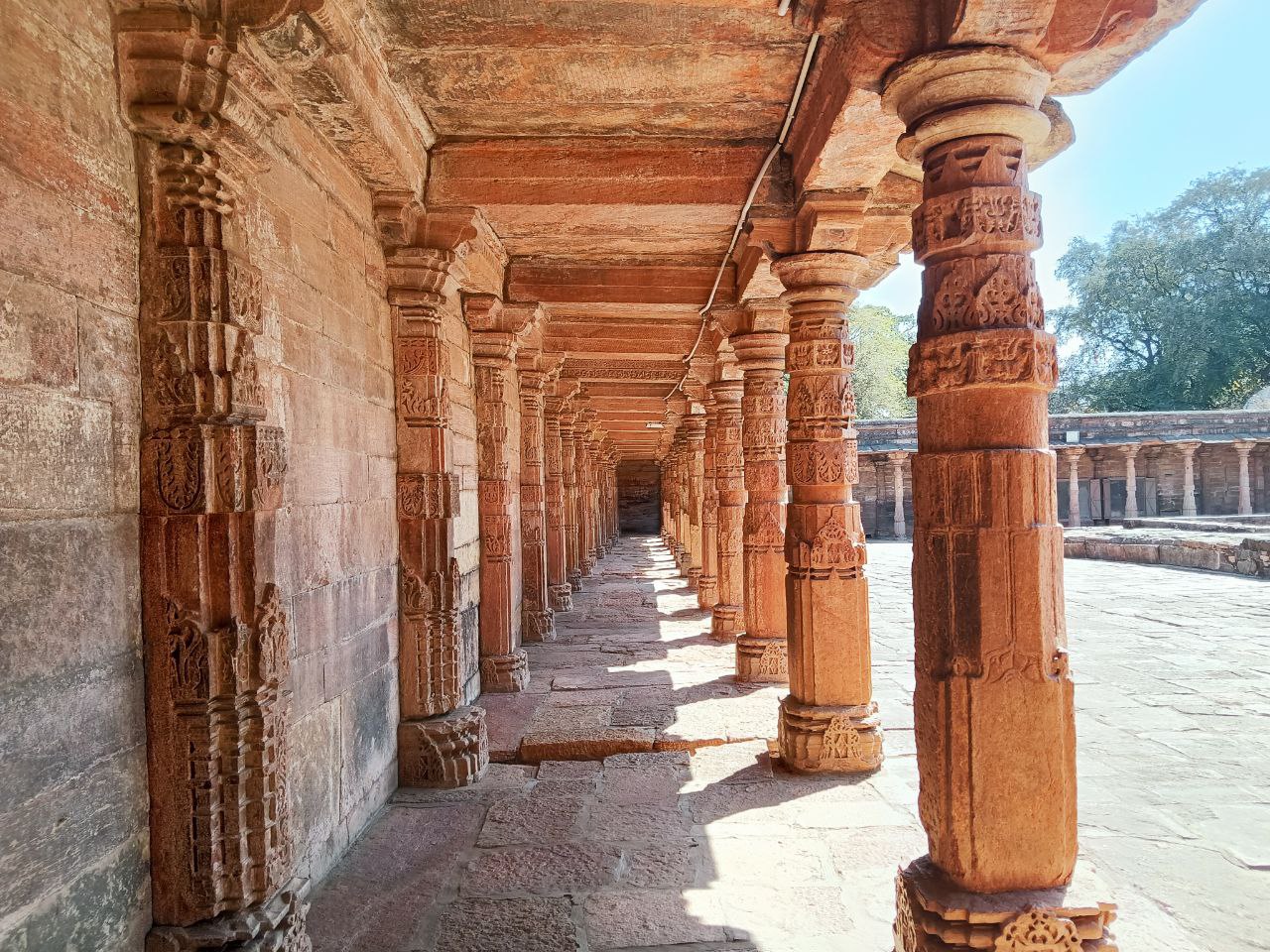
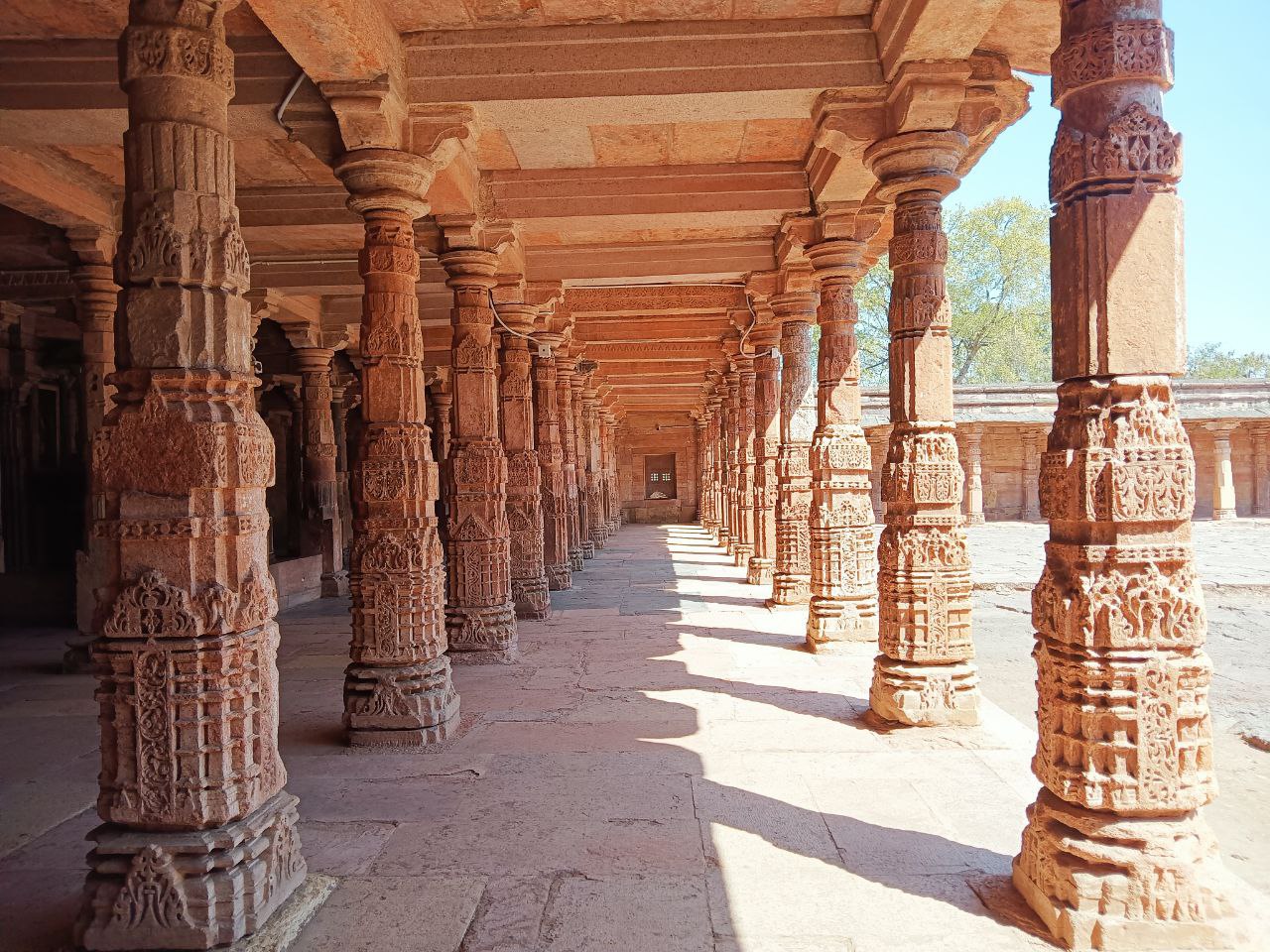
Some of the stories claim that impressed with the abilities of Kamal Maulana, the then-ruler of the Parmara dynasty, gave him a piece of land to build their mosque, which is around two kilometres from the Bhojshala campus and is called as Rehmat Masjid. However, the Muslims claim Bhojshala as their mosque. (Organiser visited this Mosque as well)
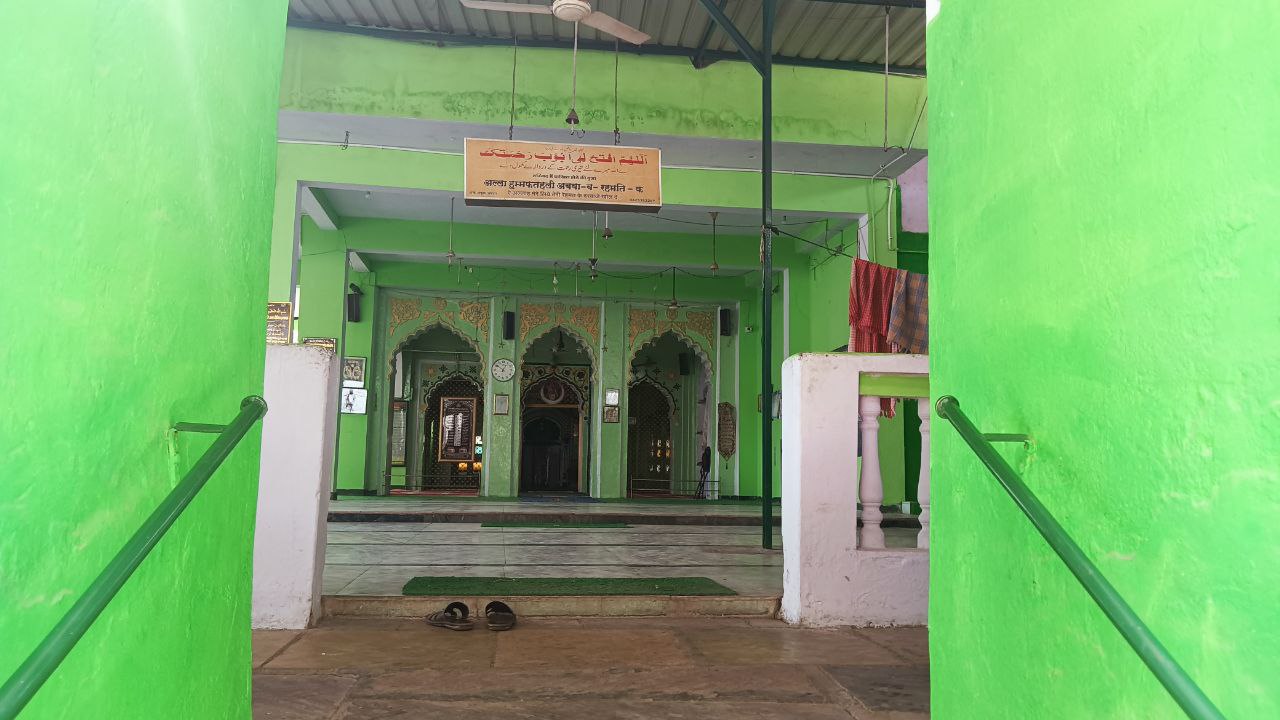
In subsequent years, Muslim rulers like Dilawar Khan and Mehmudshah further vandalised Bhojshala, attempting to convert it into a dargah, a trend that persisted even after Maratha and British rule. Lord Curzon relocated the temple deity’s idol to England in 1902, now housed in a London museum. Muslims attempted Namaz within Bhojshala during British rule in 1930, thwarted by Hindu activists from Arya Samaj and Hindu Mahasabha.
In 1952, the Central Government handed Bhojshala to the Archaeological Survey of India. Concurrently, organisations like Rashtriya Swayamsevak Sangh and Hindu Mahasabha initiated campaigns to raise awareness among Hindus about Bhojshala, leading to the establishment of Shri Maharaja Bhoj Smruti Vasantotsav Samiti. Notably, Padmashri Dr. Vishnu Shridhar Wakankar confirmed in 1961 that the Vaghdevi idol in London was indeed the original one installed by Raja Bhoj.
In a significant turn of events, CM Digvijaya Singh’s 1997 decree permitted Muslim Namaz at Bhojshala every Friday, while restricting Hindu entry, allowing only puja on Vasant Panchami. However, Bhojshala fully reopened for Hindu darshan in April 2003, with devotees permitted daily visits except on Tuesdays, reserved for floral worship.
Legal Battles and Religious Turmoil: Bhojshala’s Journey
As the correspondent continued exploring the campus with Sumit, we encountered significant features. Sumit pointed out a large Havan Kund and pillars, along with remnants of broken sculptures discovered during the initial ASI survey. Sumit explained that these artefacts were unearthed from the Havan Kund during excavation.

The left section of the temple housed a Shiv Mandir, while the right side featured an exit known as Saraswati Koop, believed by Hindus to be the outlet for water used in Abhishek, taken by students as Prashad. Additionally, besides the Shiv Mandir, the campus had a Hanuman Mandir adjacent to the Garbha Griha. On Tuesdays, when Hindus visit the campus, they bring portraits of Maa Saraswati and Hanumanji, placing them in the Garbha Griha for worship.
Apart from the temple, the ASI secured other inscriptions and statues, including Nagbandh Yantra and Siddhi Yantra. In efforts to convert the mandir into a mosque, structures like Ganpati Ji, along with carvings of Shankh and Gada, were manually ground down with machines. There were also attempts to deface designs on the shikhar of the temple and circles inside it.
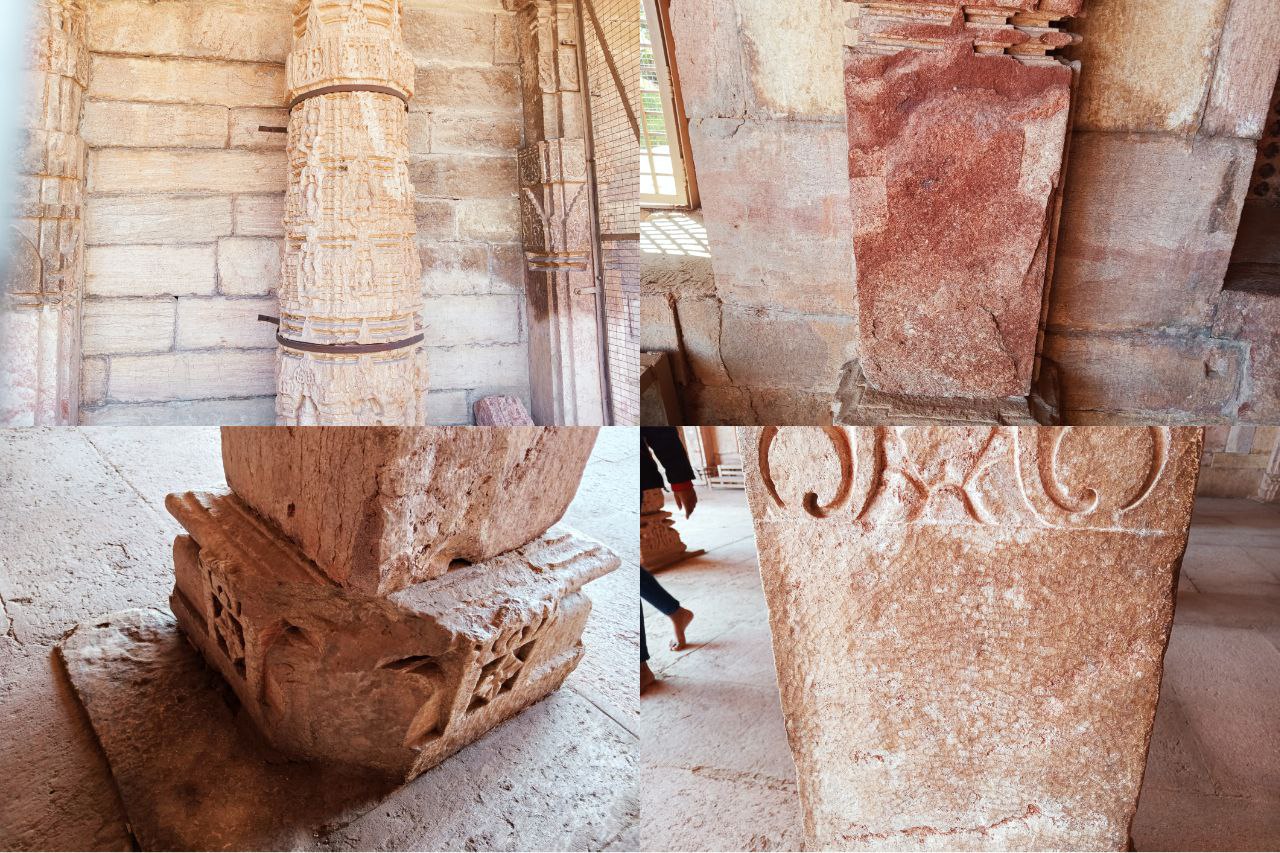
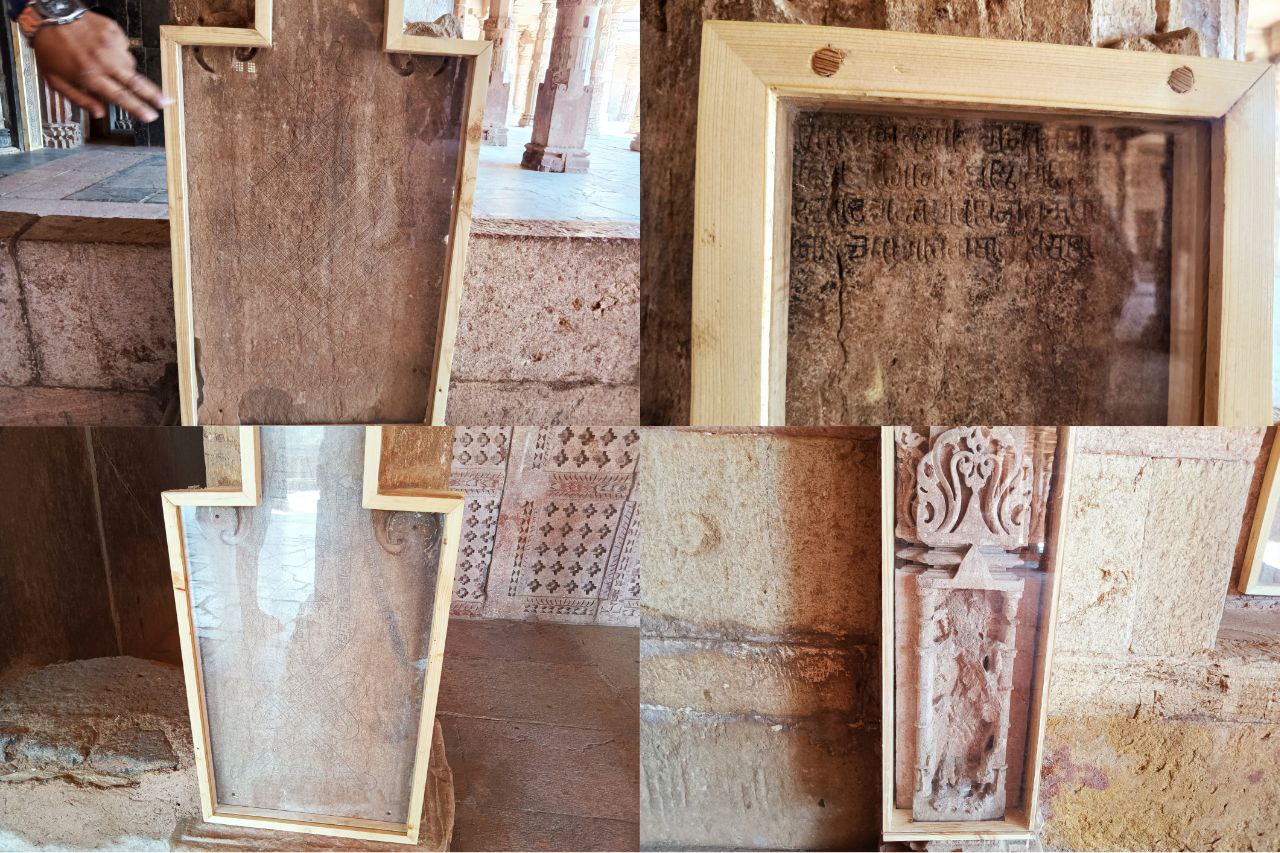
Upon entering the Garbha Griha, it becomes quite evident that there is a recent addition to the original structure, constructed from red stone, except for the marble outline of the Garbha Griha. Arabic text engraved on the outline, protected by glass casing, adorned the space. Inside the empty Garbha Griha, a lotus is placed, with carvings on the top shikhar resembling temple structures, while intentionally placed inscribed stones on the floor carry religious texts, placed there to hurt Hindu religious sentiments.
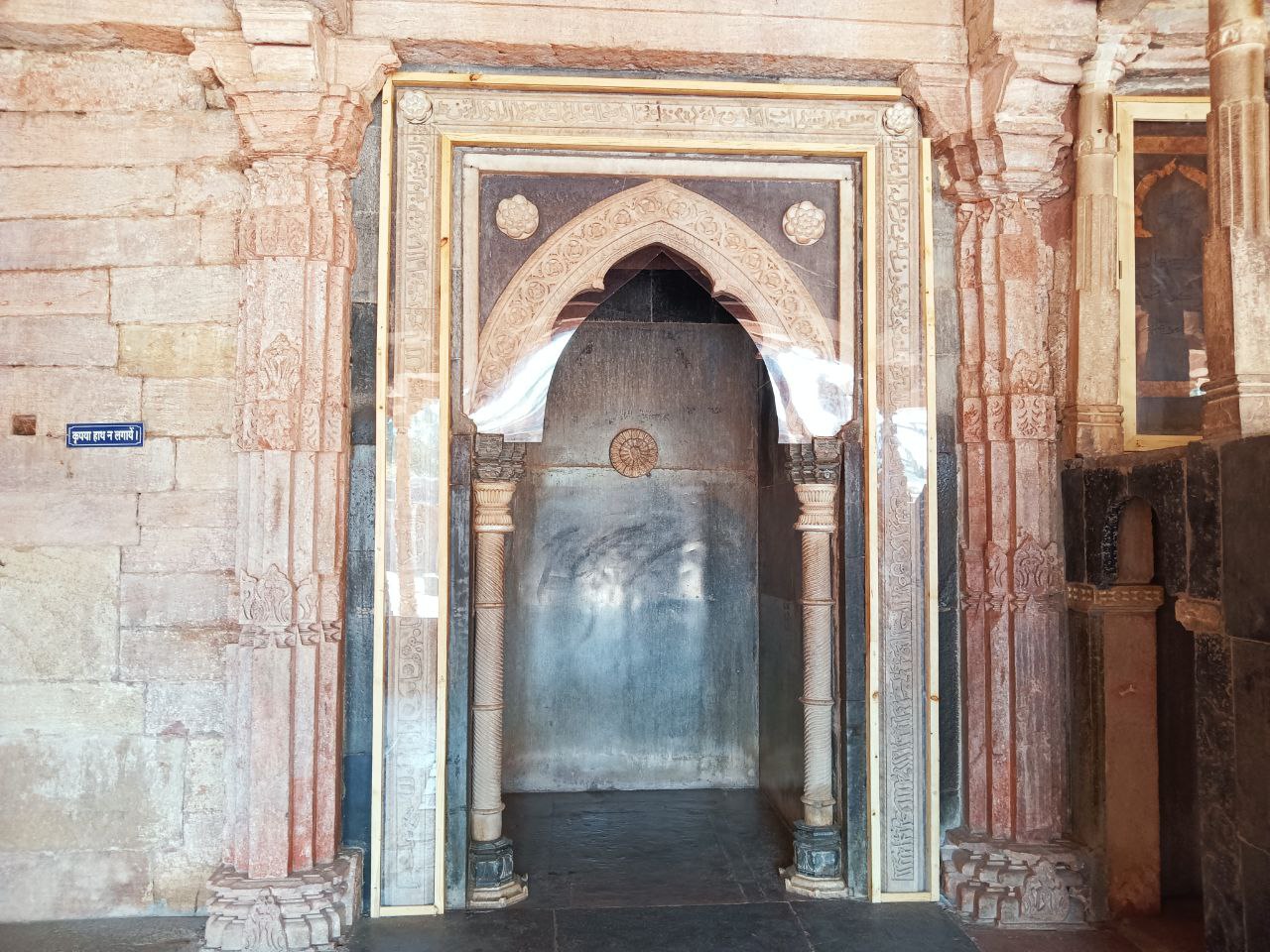
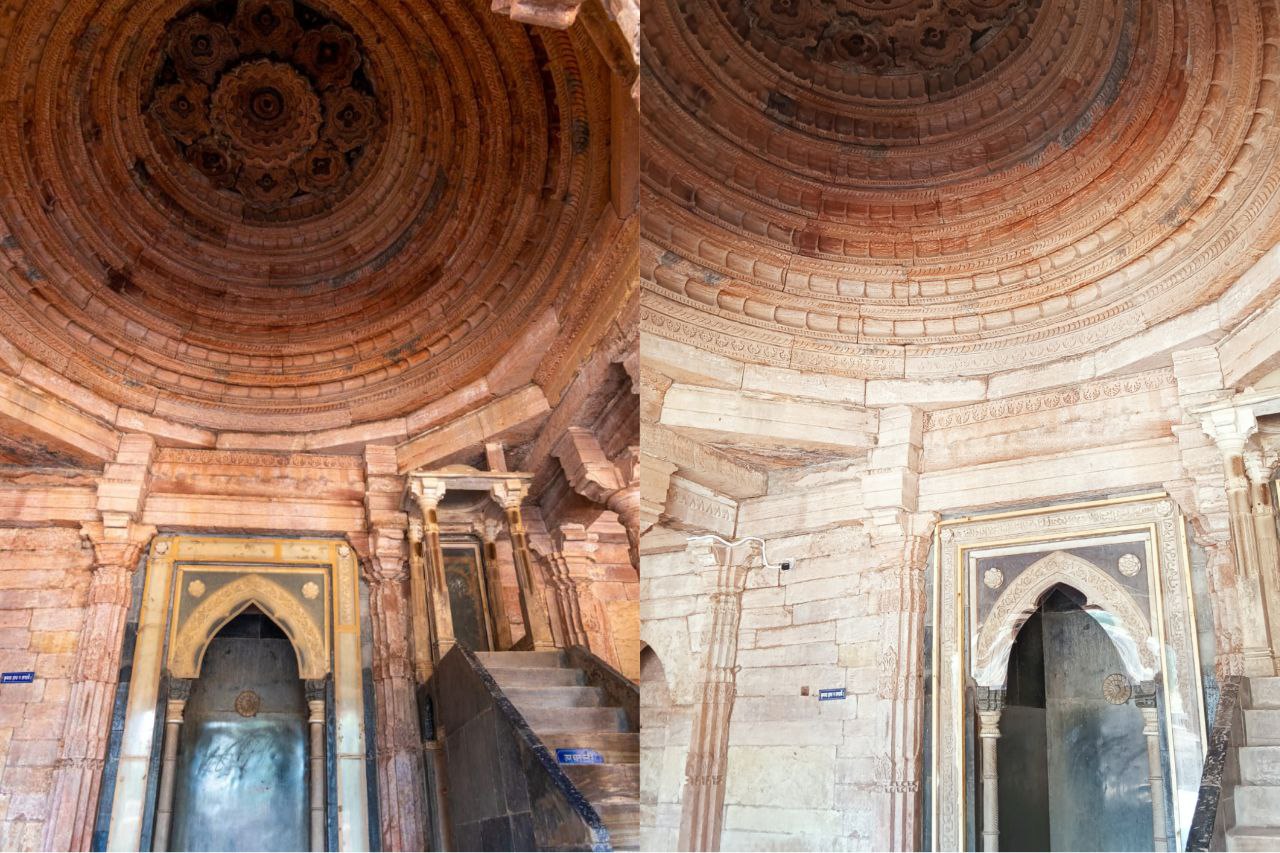
As per official records, examination revealed that the reverse side of two large black stone slabs forming the lining of the mehrab were inscribed. These inscriptions consist of a dramatic composition in classical Sanskrit, created during the reign of Arjunavarma Deva (A.D. 1299-10 to 1215-18).
The official site of the Madhya Pradesh Tourism states, “It was originally the temple of Saraswati (the goddess of learning) to which poet Madana probably refers to in his said drama. The temple was said to be the ornament of 84 squares of Dharanagari, the city of palaces, temples, colleges, theatres and gardens. The image of the goddess Saraswati is now in London Museum.”
Sumit explained that on Fridays, the Muslim community utilises the same Garbha Griha for Namaz, with their clerics occupying the space where Hindus place portraits of Maa Saraswati on Tuesdays. Adjacent to the Garbha Griha’s right side stood a temporary marble structure, its inscriptions chopped into pieces, though some texts remained visible. Sumit mentioned that this structure dates back to the Mughal period, as they used it as their meeting hall. There was an Islamic text engraved above 8-10 staircases, accompanied by a sign prohibiting anyone from climbing up and sitting.
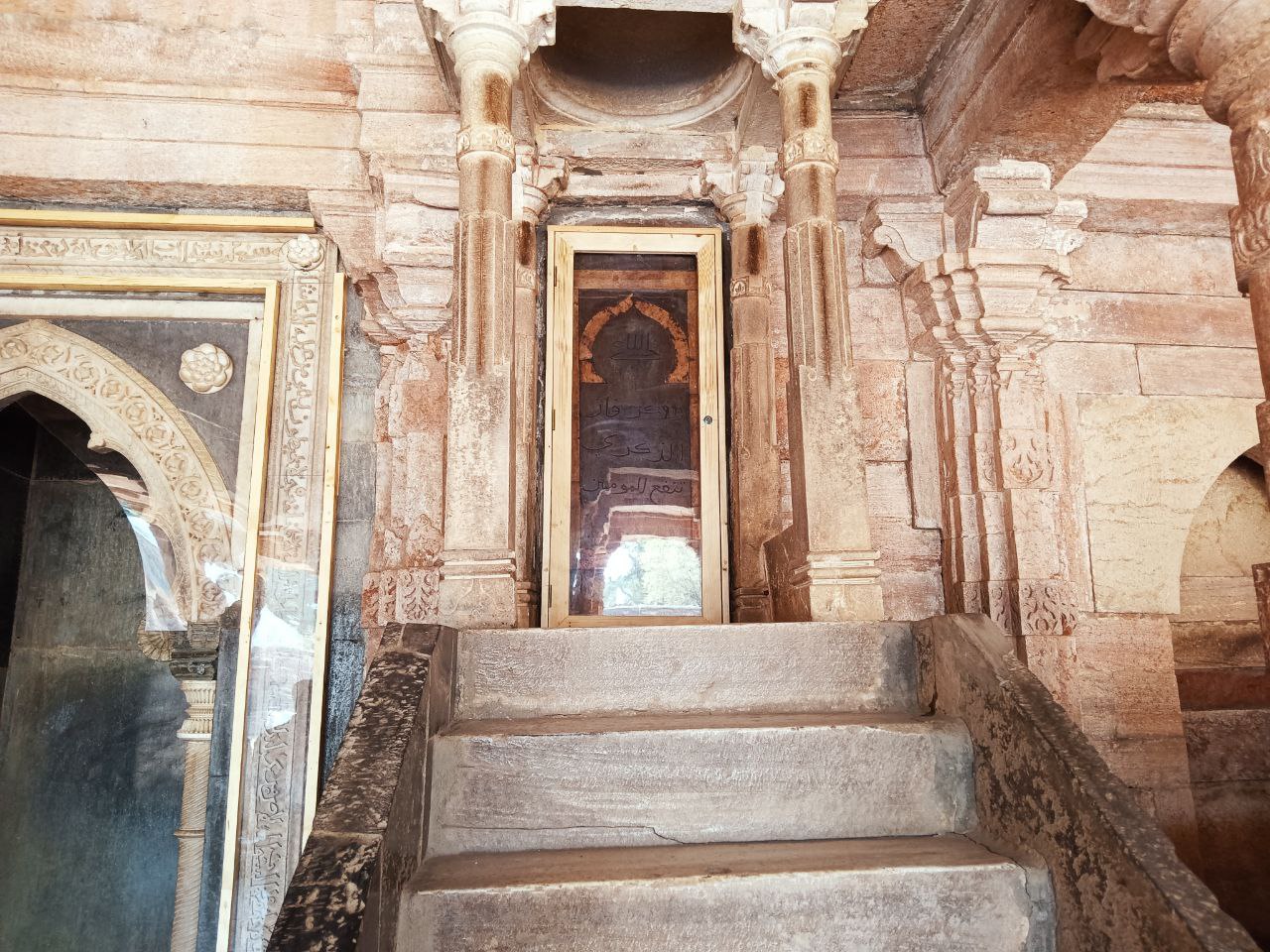
These were the historical beliefs and claims presented by the Hindu side.
This correspondent also visited the Kamal Maula Mazar and conversed with the caretaker, Niyazuddin, to gain insight into their beliefs. Niyazuddin, a claimed descendant of Kamaluddin and the 19th generation serving as Khadims at the Mazar, recounted its existence for over 700-800 years. According to him, Kamaluddin, hailing from Punjab, served the region for over 40 years, revered by Muslims for his healing abilities.
Niyazuddin, also a part-time gym trainer and a Khadim, mentioned his education in a Madrasa and Dhar government college. When questioned about the claim regarding the Bhojshala complex, he refrained from commenting due to its sensitivity, insisting it is a mosque and will remain so, despite observations suggesting otherwise. He explained the presence of a Hawan Kund, interpreted as a ‘Wuzukhana’ by Muslims.
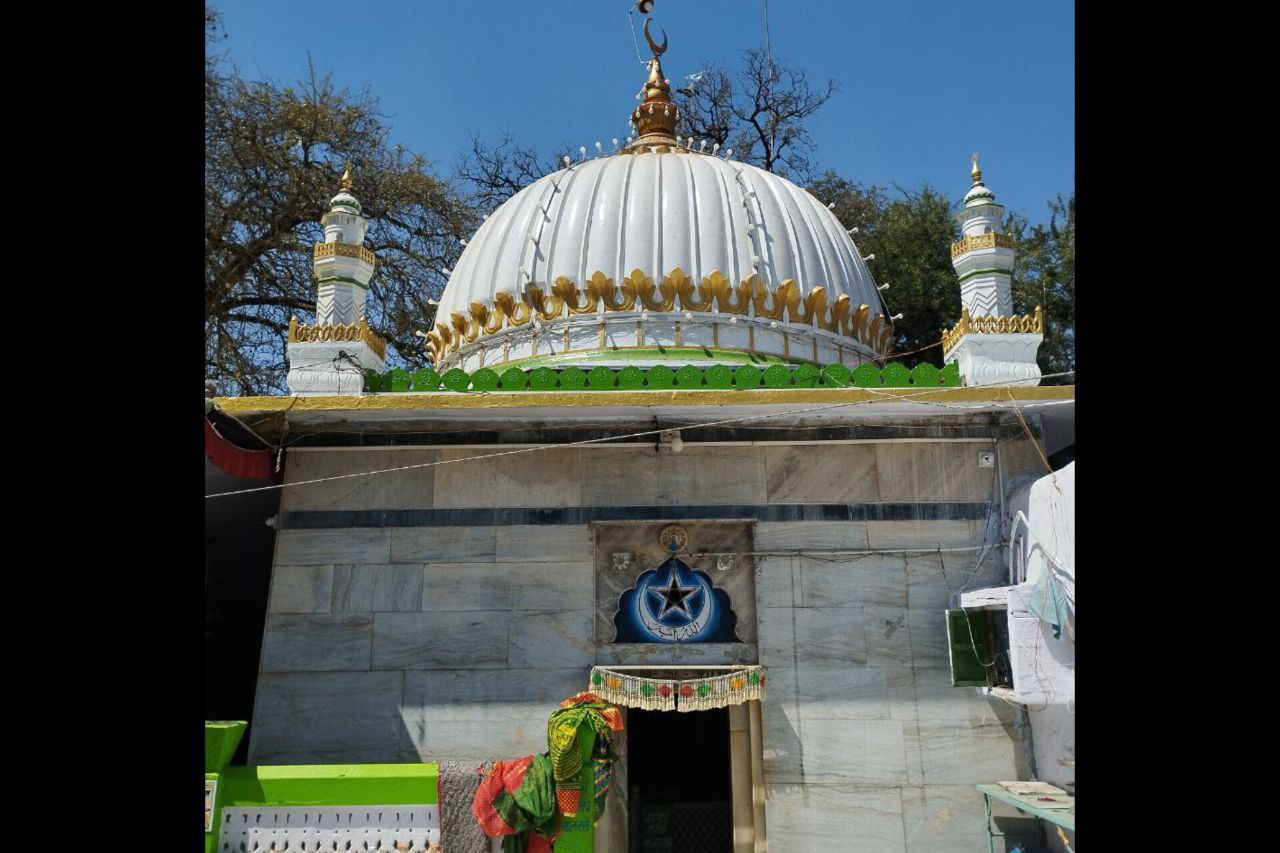
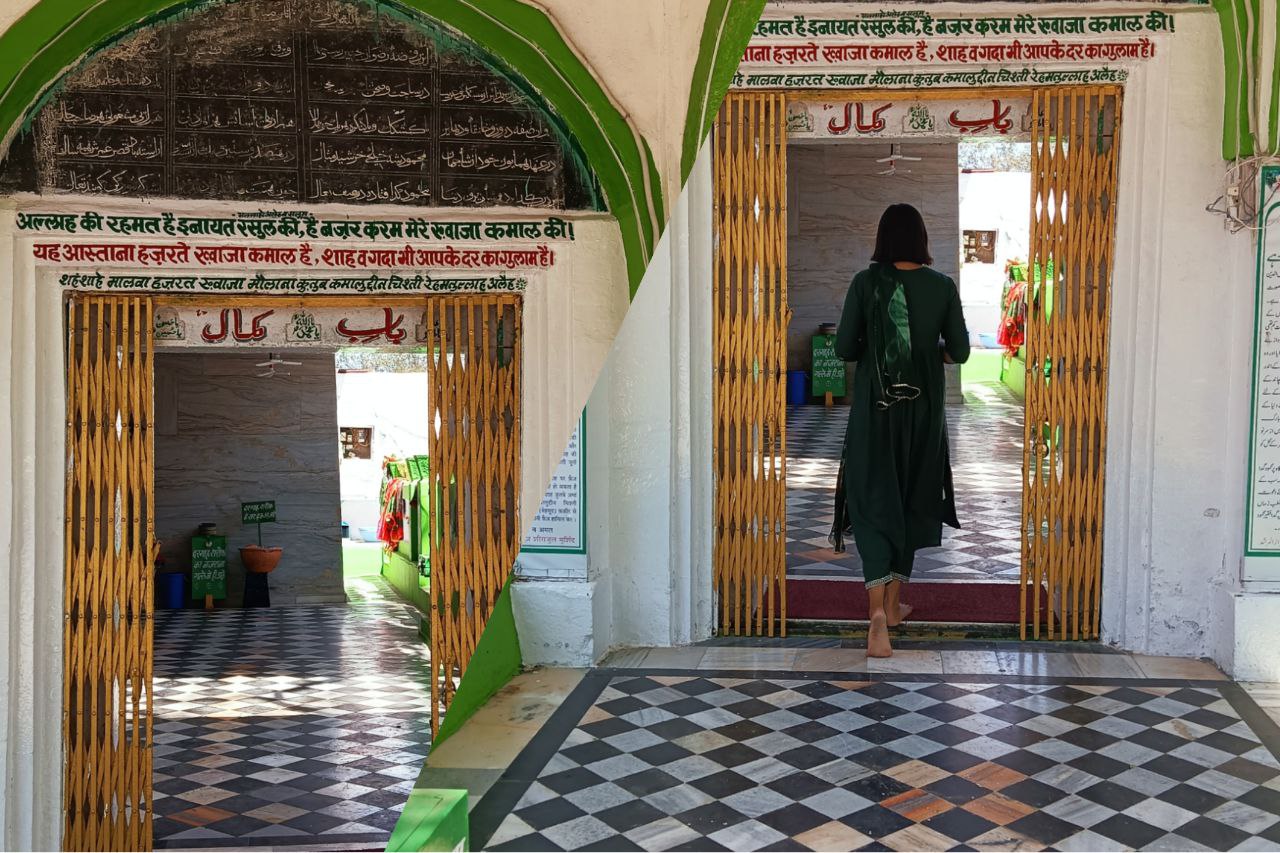
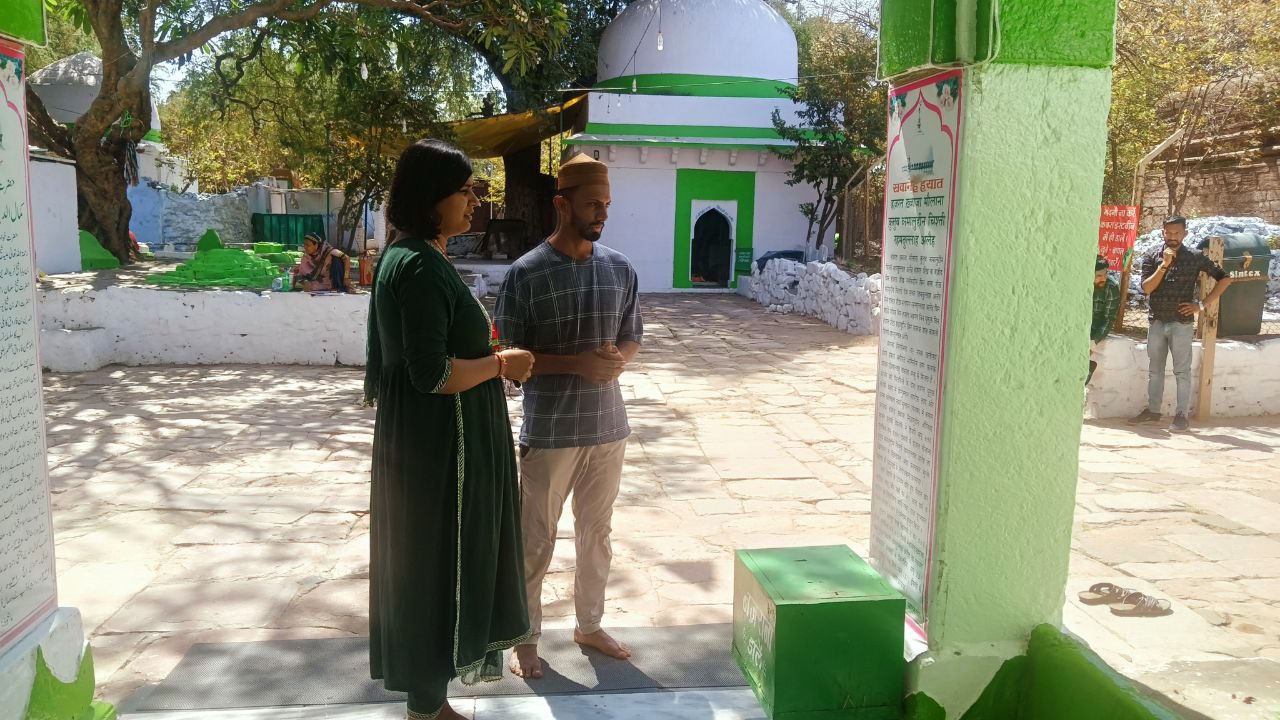
Similarly, he elaborated on the Saraswati Koop, known as ‘Akkal Kua’ by Muslims, attributing its significance to Jamaluddin, who arrived from Madina. It is believed that Jamaluddin lost his lash in Madina, only to find it in Malwa, transforming the kua’s water into ‘Shifa ka Pani’/ Aabe Jam Jam. However, when this correspondent inspected, there was no water found, only coins atop the locked grills.
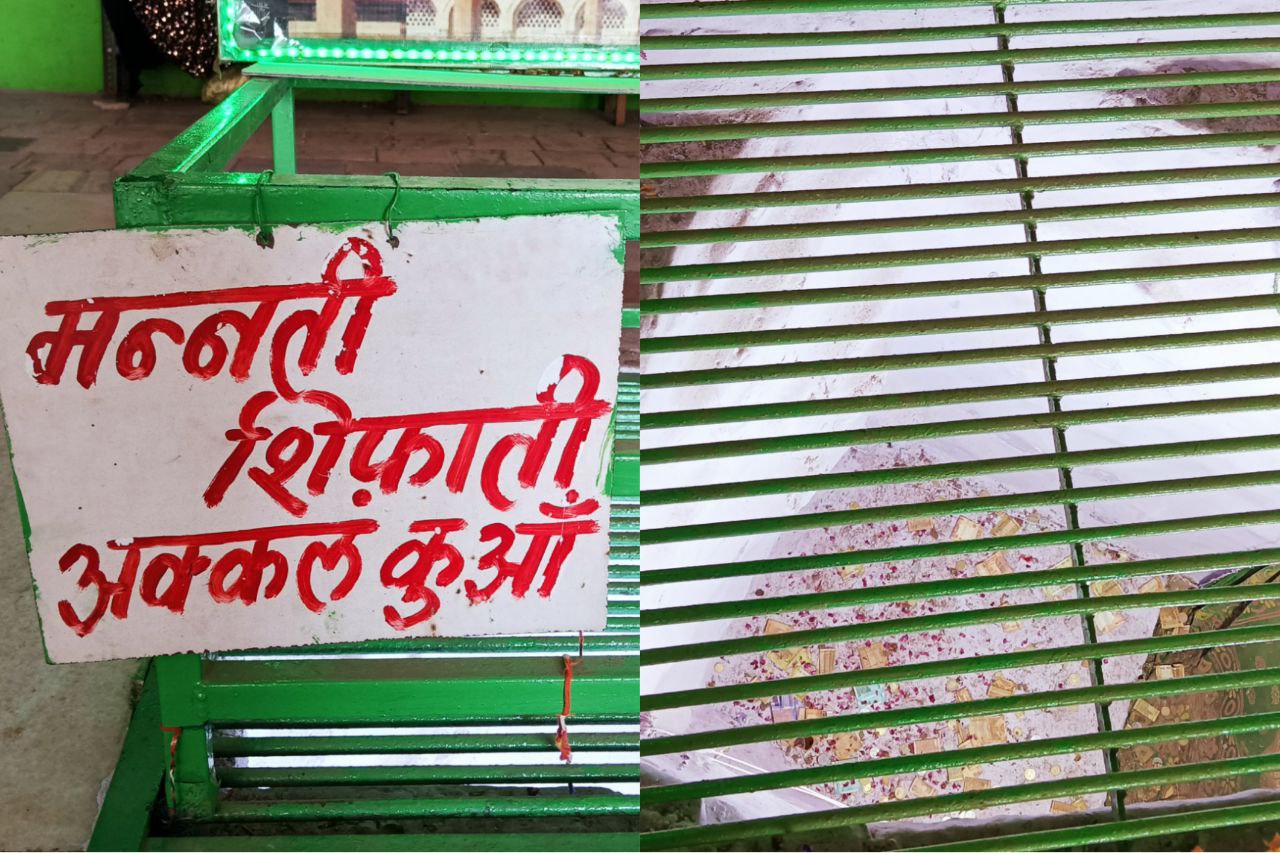
Beyond the Akkal Kua, a curtain concealed the wall of Bhojshala, serving as a dumping ground for waste from the Mazar. A structure resembling a grave, labelled as Jamaluddin’s Mazar, stood nearby. It was a similar site as in Gyanvapi where waste was dumped beside the temple.
As this correspondent exited the Mazar, locals congregated outside amidst numerous Mazar-like structures, sprawling over kilometres in what looked like a Muslim graveyard. An outdoor Wuzu Khana with floor taps marked the boundary, leading to a wood-cutting store and residential buildings.
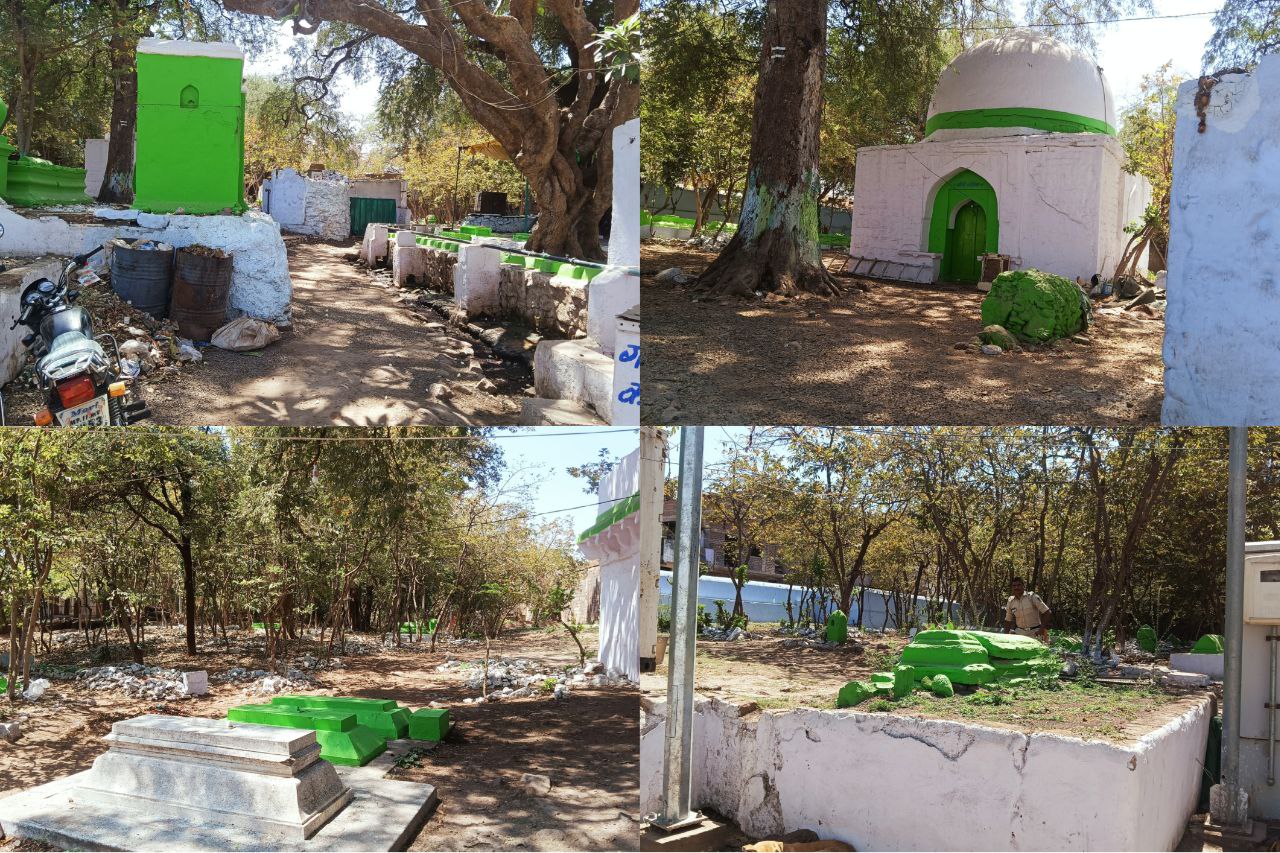
Upon returning to Bhojshala, two Muslim men entered with shoes and tickets. When this correspondent inquired about the footwear, the security guard clarified the site’s dual identity as an ancient site during the week and a religious site on Tuesdays and Mondays.
As per the security guard, on Tuesdays, as many as 1200 to 1500 Hindus visit the temple and worship the Maa Saraswati. On the other hand on Fridays, as many as 3000-4000 Muslims come to offer namaz.
Basant Panchmi Clashes: A Turning Point in the Conflict
Since 2000, Hindu organisations have initiated the tradition of organising Mahaaarti on Basant Panchmi to rouse the Hindu community from dormancy. The inaugural Maha aarti saw 49 couples from various castes and around five thousand participants. By 2001, the number of couples grew to 1001, establishing a yearly tradition on Basant Panchmi.
As Hindu attendance swelled, Muslims began commemorating Kamal Maulana’s birthday on Basant Panchmi, organising their events. Consequently, the administration issued orders allowing Hindus to conduct Puja until 1 pm, after which Muslims could offer Namaz on the premises.
Tensions flared in 2003 when Basant Panchmi coincided with Friday, leading to clashes between the administration and Hindu devotees. The confrontations turned violent, resulting in three Hindu fatalities in the police firing. Approximately 50 Hindu activists were arrested and jailed, marking a bloody chapter in the struggle. Subsequent clashes occurred in 2016 when Basant Panchmi fell on Friday, with Hindus resisting eviction to accommodate Muslim prayers.
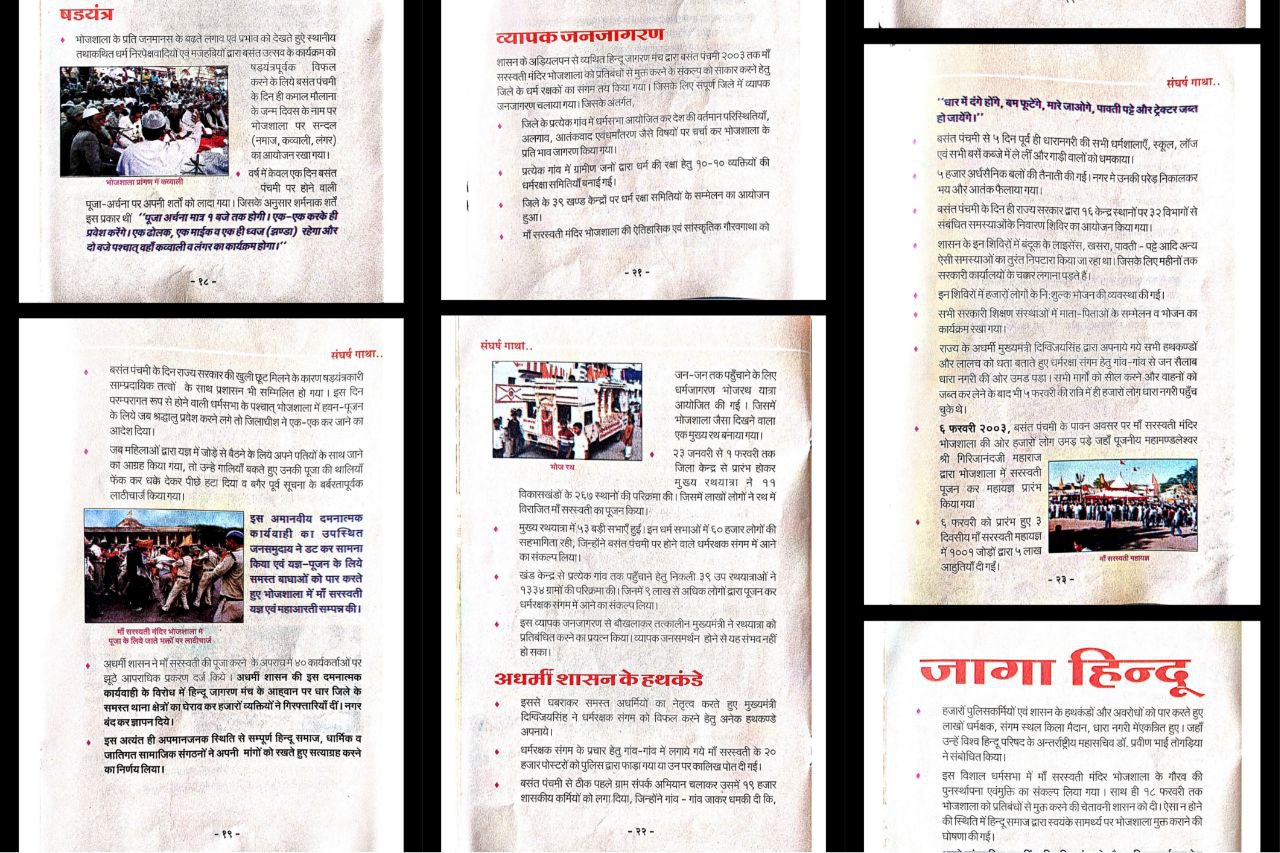
Since 2003, Hindu organisations have persistently pursued legal claims to the temple site without success. To raise awareness about Maa Waghdevi and Bhojshala, these activists have established Dharm Raksha Samitis in every district sector.
Ahead of the 2003 Basant Panchmi, a massive Bhoj Rath Yatra traversed 267 locations in the district, drawing government scrutiny and prohibitions. When thousands of Hindus converged on Bhojshala after the Rath Yatra, the city was militarised, and police deployed tear gas, resulting in numerous injuries and arrests. around 50 women were locked in jails, and more than hundreds of people were injured, with 37 of them being severely injured. Subsequent curfews were imposed across multiple regions, and cases under IPC Section 302 and NSA were filed against Dharm Rakshaks. Collective fines totalling Rs. 1.16 crore were imposed on 315 Hindus, accompanied by property seizures.
Despite these challenges, the administration eventually relented, permitting Hindus to enter the temple premises and offer Puja on Basant Panchmi and every Tuesday.
Sankalp Jyoti Mandir
In 2005, 60 DharmRakshaks undertook a barefoot pilgrimage from Maa Sharda peeth Maihar to Dhar, bringing the Akhand Jyoti to be housed in a temple opposite Bhojshala. They vowed to transfer the Jyoti to Bhojshala upon the return of Maa Wagh Devi’s Murti from London and the Hindu reclamation of the campus. Since 2005, the Akhand Jyoti has burned continuously, symbolising the wait for the temple’s restoration.
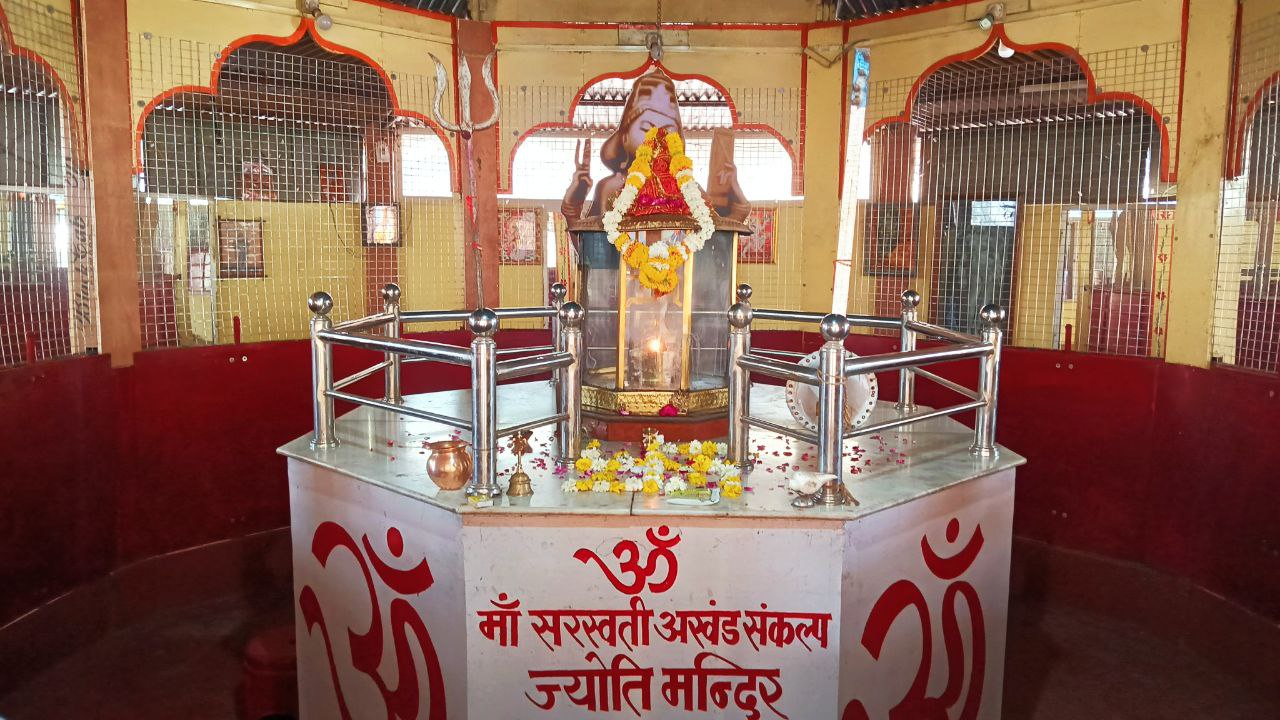
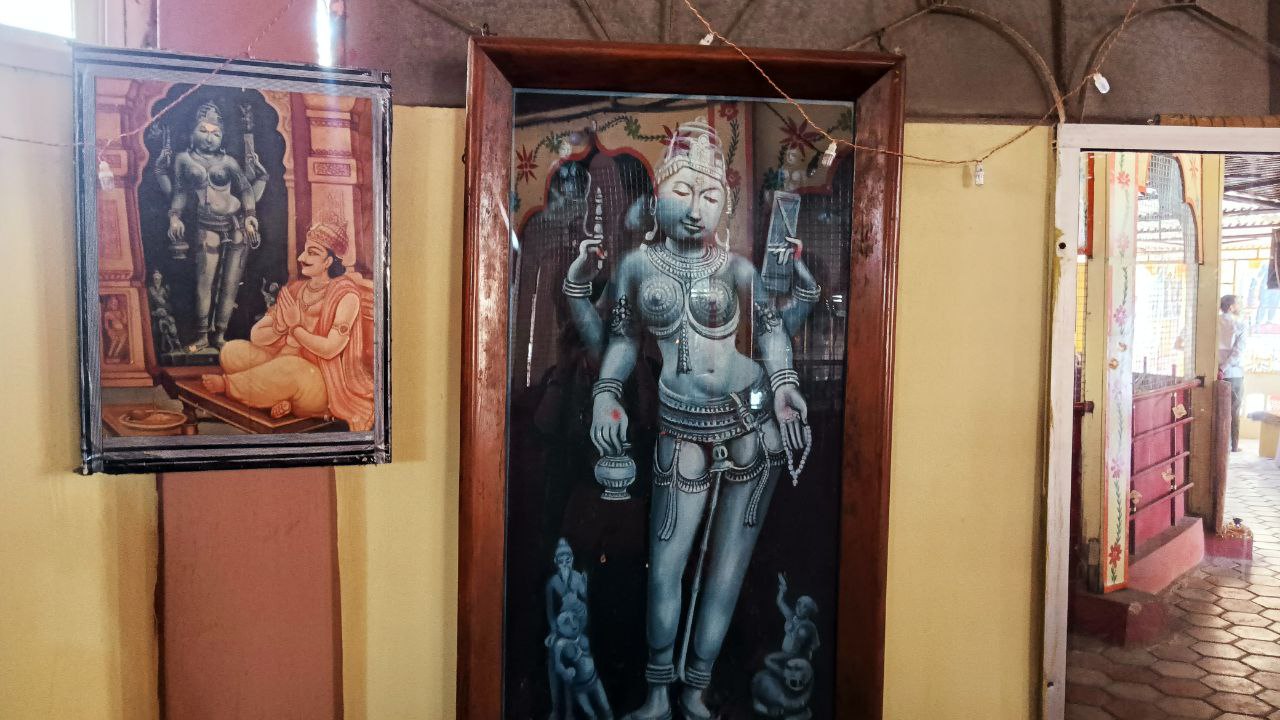
Hope for Resolution: ASI’s Role in Unraveling Bhojshala’s Mysteries
On March 11, the Madhya Pradesh High Court (Indore Bench) issued a directive to the Archaeological Survey of India (ASI) to conduct a thorough scientific investigation, survey, and excavation at the Bhojshala Temple cum Kamal Maula Mosque complex.
This directive came during the hearing of an interlocutory application filed in a pending writ petition by the Hindu Front for Justice, which seeks a scientific survey of the Temple-Mosque premises and aims to reclaim the complex on behalf of Hindus. Additionally, it seeks to prohibit members of the Muslim community from offering namaaz on the premises.
The Court emphasised the necessity to demystify the nature and character of the monument, maintained by the Central Government, from confusion. It asserted that it is both a constitutional and statutory obligation of the ASI to conduct a scientific survey and study promptly.
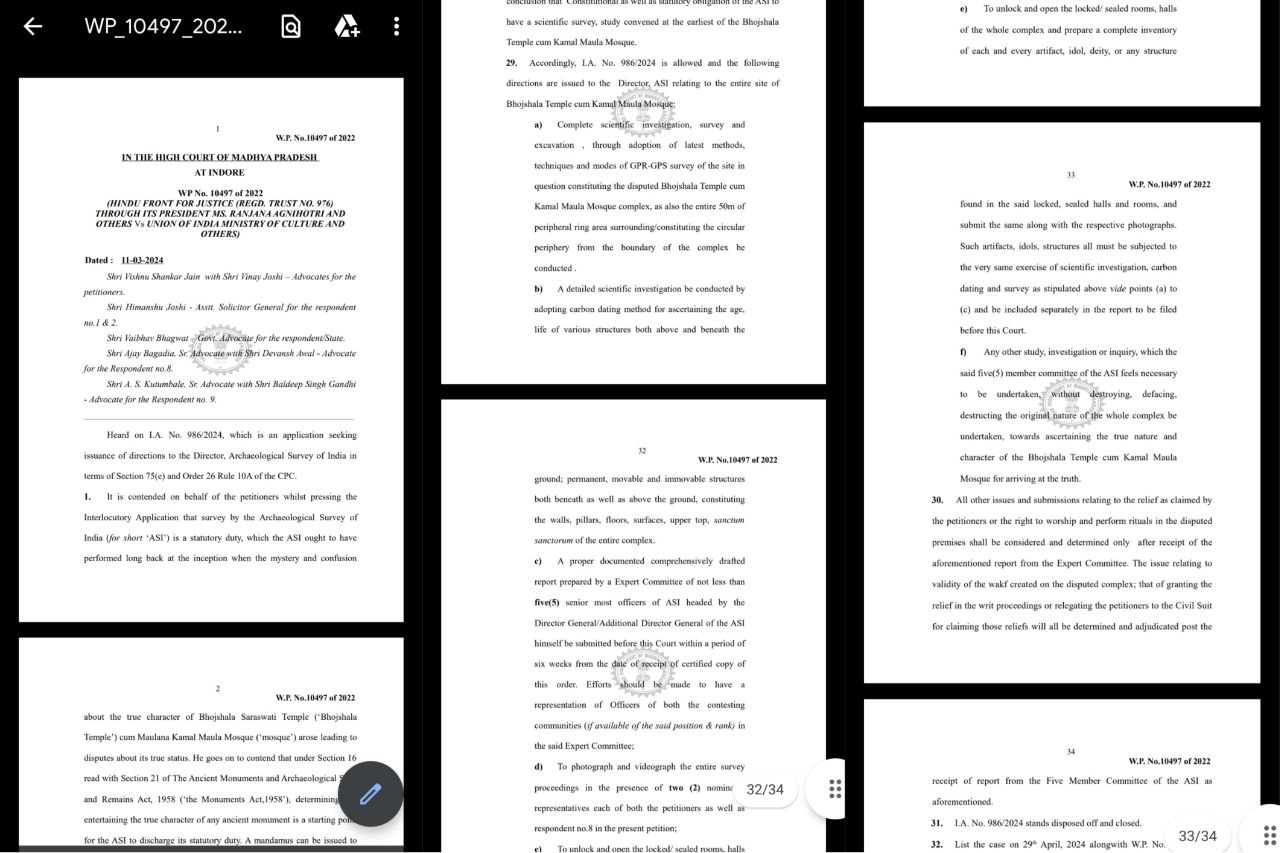
The Court issued the following directions to the Director, ASI, regarding the entire site:
a) Conduct a comprehensive scientific investigation, survey, and excavation using the latest methods, techniques, and GPR-GPS survey within the disputed Bhojshala Temple cum Kamal Maula Mosque complex and its surrounding 50m peripheral ring area.
b) Utilise the carbon dating method to ascertain the age and composition of various structures within the complex, both above and below ground.
c) Form an Expert Committee comprising at least five senior ASI officers, led by the Director General/Additional Director General, to prepare a detailed report within six weeks. Efforts should be made to include officers from both contesting communities.
d) Document the survey proceedings through photography and videography in the presence of nominated representatives from both petitioners and respondents.
e) Open locked/sealed rooms and halls within the complex, inventory artefacts, idols, deities, or structures found within, and subject them to scientific investigation, carbon dating, and survey.
f) Undertake any additional study or inquiry deemed necessary by the Expert Committee without altering the original nature of the complex.
The Court clarified that all other issues and submissions regarding relief claimed by petitioners or rights to worship and perform rituals will be considered only after receiving the report from the Expert Committee.
Furthermore, decisions regarding the validity of the wakf on the disputed complex and the relief sought in the writ proceedings will be determined post-receipt of the Committee’s report.



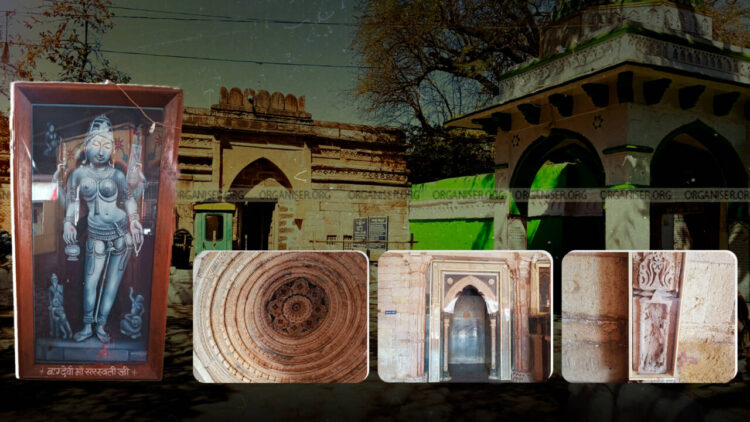












Comments